KNEEL WITH POPE JOHN PAUL II IN PRAYER AUGUST
General: That the European Union may draw new impulse from the Christian heritage which has always been an essential part of its culture and history.
Missionary: For ever greater unity and cooperation among Institutes working in the missions.





Perth: 26 August 2004 Price: $1
Seminarians back celibacy
D i s t u r b e d b y ‘ n e g a t i v e ’ c l e r g y p e t i t i o n , h u n d r e d s o f
U S s e m i n a r i a n s b a c k C h u r c h t r a d i t i o n o f c e l i b a c y f o r p r i e s t s
By Jerry Filteau
WASHINGTON (CNS) - At least 556 US seminarians have signed a letter to the head of the US bishops' conference affirming their support for mandatory celibacy in the Catholic priesthood of the Latin rite.
Gary Kasel of the Archdiocese of St Paul-Minneapolis and Franz Klein of the Diocese of La Crosse, Wisconsin, initiated the signature project last year.
They said they did so because they were concerned about the negative impact of a petition last year by a group of Milwaukee priests urging the US bishops to begin admitting married men as candidates for the diocesan priesthood in the Latin rite.
In the letter to Bishop Wilton Gregory, president of the US Conference of Catholic Bishops, the seminarians said, "We are writing today to affirm our support for Holy Mother Church's teaching on the place of celibacy in the priesthood.... We, to whom the precious gift of divine grace to live as celibates has been given,
yearn with all our hearts to offer this celibacy up to the Lord with undivided hearts, at the service of his Church."
K asel and Klein were classmates completing philosophy studies last year at St John Vianney College Seminary in St Paul, where they initially circulated their letter after getting it cleared with their rector, Father William Baer.
Through fellow students at St John Vianney who knew students in other seminaries around the country, they sent letters to those contacts asking them to circulate the letter and seek signatures in their respective seminaries. They said they only worked through such personal contacts and made no effort to canvass all US seminarians.
Students from 12 other seminaries responded as well and Bishop Gregory received a total of 556 signatures from the 13 institutions.
Father Edward Burns, executive director of the US bishops' Secretariat for Vocations and Priestly Formation, shared inforC o n t i n u e
Sudan appeal - Page 3

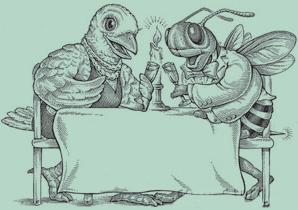


Not being backward in coming forward, some of the students
“Where are you from?” the children asked.
“Perth,” replied McMillen, adding “we’re journalists from the Catholic paper.”
“Oh, you mean discovery?” the children asked.
Obviously discovery makes an impact wherever it goes.
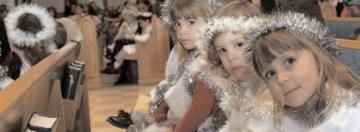
Brian Gardner’s HONDA 432 Scarborough Beach Road Osborne Park 6017 Phone: 944 99 000 DL0891 For the best deal on a new Honda, accessories, parts, finance or from our range of quality used vehicles. new@hondanorth.com.au www.hondanorth.com.au HONDA NORTH HONDA NORTH WA’s only Catholic weekly newspaper
d o n P a g e 2
Gathering material for forthcoming editions of The Record journalist Jamie O’Brien and photographer Carole McMillen made a stop at St Joseph’s School, Kununurra, in the Kimberley recently and met some enthusiastic readers they didn’t even know they had.
asked if Ms McMillen would take their photograph.
discovery
everywhere
Students, (back left to right) Dean McGinty, Joshua Carlton, David Davies and Braydon Roland pose for their photo.
rea ders
V i v e l a d i f f e r e n c e ! J o h n P a u l I I Returns an icon page
T e l l i n g y o u r c h i l d r e n Birds and bees page 5 S u d a n You CAN help.Now. pages 8 & 9 Boys AREboys and girls AREgirls Taking sex differences seriously - Page 14 T h e P a r i s h T h e N a t i o n T h e W o r l d
Press
th Catholics raise $95,000
Caritas
Photo:Carole McMillen
16
Stop
Per
for
No. 4017
DISTRIBUTION
The Record, established in 1874, is distributed to Catholic Churches, presbyteries, religious houses and subscribers throughout the Archdiocese of Per th, Geraldton, Bunbury, Broome and overseas.
THE TEAM
Managing Editor
Peter Rosengren
Production/ Advertising
Carole McMillen
Office Manager
Kylie Waddell
JOURNALISTS
Bronwen Clune
Debbie Warrier
Jamie O’Brien
CONTRIBUTORS
Hugh Ryan, Paul Gray, Fr Tim Deeter, Tony Evans, George Russo, Peter Dwan, Norma Woodcock, Guy Crouchback
SUBSCRIPTIONS
Subscribe to The Record (46 issues) and Discovery (6 issues) $55 per year.Send subscription with cheque or money order. ADVERTISING
Editorial:Tuesday
mail
C o n t i n u e d f r o m P a g e 1
-mation on the letter and petition results with Catholic News Service in August, shortly after The Catholic Times, La Crosse diocesan newspaper, interviewed Klein and Kasel.
"This is indicative of the type of men that are responding to the priesthood today," Father Burns told CNS. "They're committed, dedicated, faith-filled, prayerful. And really they stand inspired by the teachings of our Holy Father.
"What we're finding is that the Holy Father has impacted vocations around this country and throughout the world in a significant way, and they are committed to the teachings of Pope John Paul II," he added. Pope John Paul has repeatedly reaffirmed the long-standing Roman Catholic discipline requiring celibacy of its priests.
In an August 23 e-mail from Assisi, Italy, where he was studying Italian in preparation for theology studies this northern-hemisphere autumn at the North American College in Rome, Klein told CNS he and Kasel "did not receive a single letter responding negatively" to the contents of their letter, although some
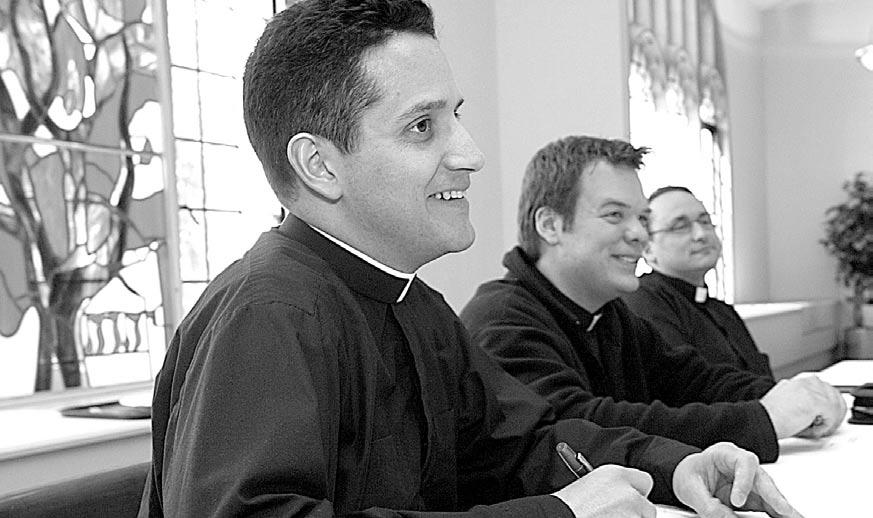
said they were not signing for other reasons.
"Several seminarians thanked us for stepping up to the plate and giving us all an opportunity to express our feelings in this matter," he wrote. "Others, however, thought that the Milwaukee priests and those who followed were not right in using a secular means (of signing petitions or position statements) to get their opinion across and did not feel that it was right for us to follow in their footsteps."
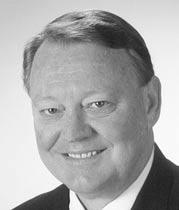

In August 2003 more than 160 priests in the Milwaukee Archdiocese wrote to Bishop Gregory asking that the US bishops begin accepting mar-

ried men as well as single men as candidates for the diocesan priesthood in order to reverse the growing priest shortage and assure that US Catholics will have access to weekly celebration of the Eucharist in the future.
Subsequently groups of priests from several other dioceses sent similar letters; about 90 priests from the Diocese of Arlington, Virginia, responded with a letter in support of the Latin-rite discipline of mandatory celibacy.
Bishop Gregory responded to the Milwaukee priests' petition with a letter to Archbishop Timothy Dolan of Milwaukee. In it he reaffirmed the Church's discipline and the value of celibacy as "a powerful spiritual means to draw closer to
Christ." He questioned whether relaxing the discipline of celibacy would lead to an increase in the number of priesthood candidates.
In his e-mail to CNS, Klein said the seminarians' petition "is not meant to be a shot at the priests who have signed letters for optional celibacy. I know several of these priests personally and know that they are holy priests and very dedicated."
"This letter," he added, "is meant to indicate only exactly what the Holy Father has spoken of as being something of great value to the type of priesthood that the Latin rite needs at this time. This important element is the grace given to those who make a single-hearted sacrifice and choose a life of celibacy."
In addition to St John Vianney, seminaries from which student signatures came included: Bishop White Seminary in Spokane, Washington; Cardinal Muench Seminary in Fargo, North Dakota; Holy Apostles College and Seminary in Cromwell, Connecticut; Holy Cross Seminary House of Formation in La Crosse; Mount St Mary's of the West Seminary in Cincinnati; and Mount St Mary's Seminary in Emmitsburg, Maryland. Also among them were: Our Lady of Guadalupe Seminary in Denton, Nebraska; Pontifical College Josephinum in Columbus, Ohio; St Charles Seminary in El Paso, Texas; and St Charles Borromeo Seminary in Wynnewood, Philadelphia. - CNS


The Record 2 26 August 2004
first
Advertising: Booking:Monday midday Copy:Tuesday midday CONTACT US 587 Newcastle Street, West Perth, WA 6005 POBox 75, Leederville, WA 6902 Tel.9227 7080 Fax 9227 7087 or find us on the web www.therecord.com.au Editor cathrec@iinet.net.au Classifieds/ Advertising advertising@ therecord.com.au Accounts administration@ therecord.com.au SUNDAY29 AUGUST R E F U G E E S U N D A Y On this day we reflect on the plight of the world’s two million refugees. We ask you to join us in prayer for refugees everywhere. ALLSAINTS REFUGEE SUPPORTGROUP ALLSAINTS PARISH, GREENWOOD 320 Murray Street, Perth WA 6000 PH:9321 4224 International Hair Styling Present this advertisement to receive a 10% discount off any service provided. Why not stay at STORMANSTON HOUSE 27 McLaren Street,North Sydney Restful & secure accommodation operated by the Sisters of Mercy, North Sydney. • Situated in the heart of North Sydney and short distance to the city • Rooms available with ensuite facility • Continental breakfast, tea/coffee making facilities & television • Separate lounge/dining room, kitchen & laundry • Private off-street parking Contact:Phone:0418 650 661 or email:nsstorm@tpg.com.au VISITING SYDNEY A LIFE OF PRAYER ...are you called to the Benedictine life of divine praise and eucharistic prayer for the Church? Contact the: Rev Mother Cyril,OSB,Tyburn Priory,325 Garfield Road,Riverstone,NSW 2765 www.tyburnconvent.org.uk TYBURN NUNS Baptismal Boutique For your baby’s special day. Christening clothing/ accessories/gifts. Gifts for the new baby. 2/85 Reid Prom. Joondalup, Tel. 9301 0166 Your Travel Business is our Business * Rome Convent Accommodation* Agents for Harvest Pilgrimages * Frequent Flyer Points Managed A division of Interworld Travel Pty Ltd Lic No.9TA796 Ground Floor,200 St.George’s Terrace,Perth WA 6000 Tel 9322 2914 Fax 9322 2915 Email admin@flightworld.com.au Michael Deering Caring for you for almost 40 years DOES ANYONE IN YOUR AREA NEED A HOME FITTING? Home Fittings? Do you find it difficult to come to the city? A FOUR SEASONS corsetiere will visit private homes, hospitals and nursing homes in the metropolitan area. Large selection of Front Fastening Bras to suit all figure types. General bra fittings, surgical fittings, post mastectomy and swimwear available all year round. A small fitting fee is charged. Please contact Elisabeth on 9322 2907 9.30am-3pm Monday - Thursday for appointments. Upper Hay Street Level, Carillon City (formerly City Arcade), Perth WA 6000 Ph:9322 2907 Fax:9321 5354 Seminarians stand for celibacy AUS seminarian takes notes at a meeting at Theological College of The Catholic University of America in Washington in February. Photo:CNS St. Rita’s Catholic Books Ph: (08) 9446 5069 stritabooks@webace.com.au We sell orthodox Catholic books for all ages: ✢ colouring books ✢ lives of the saints ✢ catechisms ✢ devotional and much more. Contact Paul or Janice for a catalogue or more information. Mail orders welcome.
Perth gives $95,000 to appeal
Perth Director for Caritas Ann Fairhead has told The Record that half of the $95,000 raised by Caritas in Perth for the Sudan crisis has come from the stories in the July edition of discovery
The total amount raised throughout Australia so far is approximately $440,000.
Considering that Western Australia represents only 10 per cent of the Australian population, the response here had been very
generous, Ms Fairhead said Ms Fairhead also encouraged people to visit the Caritas website, to assist in putting pressure on the Australian Government to help stop the continuing crisis in Sudan.
W a y s y o u c a n h e l p - P a g e s 8 & 9
See www.caritas.org.au/emergencies/sudan to voice your support.

Bindoon celebrates new church opening
By Jamie O’Brien
The sun shone brightly for the blessing and dedication of the new church building of St Anne’s at Bindoon recently.
Parishioners old and new packed the building lined with ceramic tiles, jarrah-polished pews and a marble altar.
The church, originally named St Benedict’s and opened in 1909 was blown down during a storm in 1942, and a transportable building took its place.
Parish Priest Fr Paul Fox said the parish recognised a need for a new church because of the steady increase of people in the community at Bindoon, many with young families.
Many of the items for the new building were donated by the parish of Moora and from the Mercy Sisters’ former chapel of St Anne’s in Mount Lawley.
Fr Fox said he was very happy

with the dedication and commitment made by the Bindoon community.
“It’s been almost two years since we started fundraising,” Fr Fox said.
“It was a huge effort and many parishioners were involved,” he said.
Parishioner Ricki Bennison said the striking feature of the
Coeliac sufferers ‘will not be excluded’
Catholics suffering from coeliac disease would not be excluded from the Eucharist under a Vatican ruling that altar breads must be made from wheat flour, says Father Peter Williams of the National Liturgical Commission.
Father Williams said the Congregation for the Doctrine of the Faith recently issued a response to the question of what constitutes valid matter for the celebration of the Eucharist.
The congregation determined that gluten-free flour - for example, that made from maize - did not fulfill the requirements for valid matter.
Father Williams said that following the ruling, the Catholic Church in Australia acted to ensure that low-wheaten altar breads were available.
Catholics were also able to take Communion by arranging with the priest to receive Communion from the chalice, he said.
"In order to address the pastoral needs of coeliacs," he added, "the NLC in collaboration with Ozanam Industries sought to find a wheat-flour that was low gluten

and would satisfy the requirements of both the CDF and the standards established in Australia to identify a product as low gluten according to the relevant food standards."
- Zenit
church is the jarrah wood used for the pews, panelling made by craftsmen and parishioner Bill Oorschot.
Ms Bennison said she is also very impressed with the new organ, which is the only one of its kind in Western Australia.
Ms Bennison, who was also
Notre Dame o ffers tours
Interested in hearing about some of the historic buildings which are now part of the University of Notre Dame Australia’s Fremantle campus?
Free public tours will be held at 11am every Friday.
The hour-long tour will feature historic buildings, many over 100 years old, which have been recycled for University use. Tours will leave from the University’s main reception area, 19 Mouat St, Fremantle. To book, register at reception or phone Lorraine Bennett, Community Relations Office, on 9433 0692.





M AC KILLOP CATHOLIC COLLEGE BUSSELTON
MacKillop Catholic College is a four-stream co-educational secondary school of 556 students. Situated in the south west town of Busselton, the College is committed to providing a quality Catholic education catering for all ability levels and interests, with support for students with special needs.
Coupled with a rigorous academic program, students are offered a vocational program as well as physical and cultural opportunities that provide a balanced education. MacKillop Catholic College provides strong pastoral care and Religious Education programs which challenge students in their personal and faith development.
The College buildings are modern and attractive and include well maintained sporting facilities and playing grounds.
The successful applicant will commence on 1 January 2005.
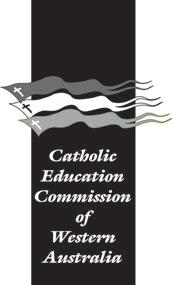
Applicants need to be actively involved in the Catholic Church and be experienced educators committed to the objectives and ethos of Catholic education. They will have the requisite theological, educational, pastoral and administrative competencies together with an appropriate four year minimum tertiary qualification and will have completed Accreditation B or its equivalent.
A current Police Clearance/100 Point Identification Check must also be included. A Police Clearance Consent Form is available from the Department of Education and Training website.www.eddept.wa.edu.au/HRRecruitment/Downloads/Police Clearance.pdf
The Record 26 august 2004 3
Official application forms
Team, on 9212 9268
Applications are to be addressed to The Director, Catholic Education Office of WA, PO Box 198, Leederville WA 6903 and be lodged no later than Wednesday 8 September 2004. Website: www.ceo.wa.edu.au PRINCIPALSHIP Bring them home for Christmas Evangelisation Our Parish Mission 2004 “Set My On Fire” St, Thomas the Apostle Parish A Catholic Bible Seminar for the New Evangelisation conducted over 15 weekly sessions at the “The presentation of the Good News message is not an optional contribution for the Church. It is the duty incumbent on her by the command of our Lord Jesus, so that people can believe And be saved. It does not permit either indifference, syncretism or accommodation. (HH Pope Paul VI - Evangelii Nuntiandi) 7.30pm every Tuesday Evening from September 7th to December 12th. 2 College Road, Claremont. WEEKLY BIBLE SUBJECTS INCLUDE: Knowing the Love of God. Jesus is Lord. Healing through forgiveness. The Holy Spirit & His Gifts. Be filled with the Holy Spirit (Why Tongues?). The Blood Covenants. Divine healing belongs to you. Bible foundations of prayer. Break open the Word. Your Righteousness in Christ. The authority of the believer. Spiritual Warfare. Praying effective prayer. The Motivational Gifts. Discerning Charismatic Gifts. Faith+Works=Results. God’s angels in your world. Overcoming the kingdom of darkness. Your victory in Christ. In the world not of the world. Turn the world upside-down with faith in the name of Jesus. Intercessory Prayer. Practical soulwinning for practical people. The Great Commission. Branches bearing fruit. The Fruit of the Spirit. Three dimensions of man. The Four Loves: Agape, Eros, Storge, Philea. How to raise your vision in God and keep it. Flame Ministries International (08) 9382 3668 Enquiries and Colour Brochure: Email: fmi@flameministries.org Set My People on Fire is to be conducted as a Parish Evangelisation Mission that Will give you a Biblical knowledge for effective apologetics and evangelisation. People
are available from Roma Criddle, Consultant, Leadership
or Email: criddle.roma@cathednet.wa.edu.au
C o n t i n u e d o n P a g e 1 1
The new Church at Bindoon, beautifully crafted in stone.
The Parish.The Nation. The World.
A patron saint for Greens?
St Francis is a guide for a balanced ecology says the director of the Sister Nature Foundation
Amid catastrophic and at times contradictory ecological views, the model of St Francis of Assisi is emerging, for some at least, as an authentic guide for a wise ecology.
For this reason, the Italy-based Sister Nature Foundation has printed for the first time, after eight centuries, the facsimile of Manuscript 338, which includes the oldest Franciscan sources, the writings of the saint, and the first redaction of his “Canticles of Creatures.”
To better understand what St Francis might say today to those who struggle to protect and respect nature, ZENIT interviewed Roberto Leoni, president of the Foundation.
What does St Francis have to say to an environmentalist?
The Sister Nature Foundation came into being as an association in 1991, receiving on September 12 of that year the encouragement of John Paul II. The objective was to contribute to the development of a correct culture of the environment, based on the Christian teaching of St Francis of Assisi.
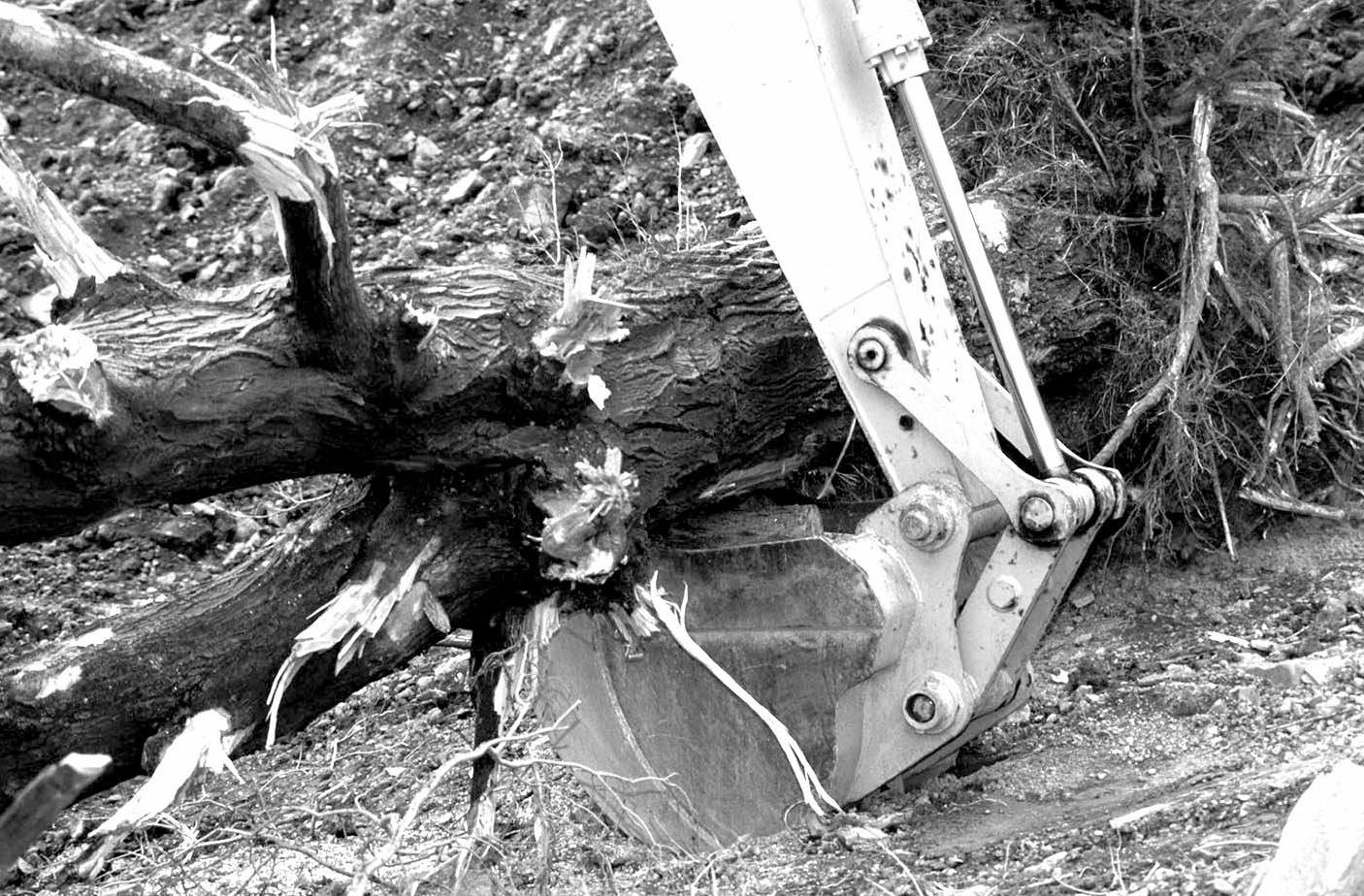
On one hand, it was realised that Christians were not very present in this field; on the other, it was seen that the environmental question was monopolised by catastrophic ideological and emotive approaches, scientifically incorrect and ethically disoriented. How is it possible to defend the environment and, consequently, life, and to be in favour of
abortion? How can biodiversity and native species be protected while favouring a couple’s external artificial fertilisation?
In 2001, after a decade in which we published documents such as the Decalogue of a Wise Ecology and the Deontological Letter of Sustainable Development, we became a foundation. Since then we have deepened our reflection

ciality; totally faithful to Christ and his Church.
Since the Middle Ages, his teachings have always run the risk of being distorted, from the pauperism of some friars to the confusion which has been created more recently between the teaching of Francis and politics.
The only flag that St Francis followed was the cross of Christ. St Francis guides us, even in one of the most complicated modern challenges: that of the relationship with other religions, in particular with Islam.
He did not launch a crusade, but went to dialogue with the sultan; he dialogued because he had a strong and unbreakable Christian identity. He went to see the sultan to understand and to take the Good News ...
According to you, what are the concepts that characterise the Christian view of the environment?
on the relation between the economy and development, discovering as “a priori synthesis” the economy of solidarity.
We addressed this issue in important meetings, with the participation of, among others, Cardinal Giovanni Battista Re, prefect of the Vatican Congregation for Bishops, and Antonio Fazio, director of the Central Bank of Italy.
Now you are publishing a facsimile of the Canticle of Creatures. How does this relate to an environmental foundation?
We think that it is an orientation text for the whole of humanity. We have always been committed to publishing it and making it known. The first redaction of the Canticle is in Manuscript 338, which includes the oldest Franciscan sources. In eight centuries, this manuscript has only been seen, read and studied by a few scholars.
Because of this, the Sister Nature Foundation has printed, for the first time in history, the facsimile of the whole of Manuscript 338. Nine hundred fifty numbered copies have been printed, which now are available to all.
Manuscript 338 is not only the root of that which is Franciscan, but also a wise ecology, of which the world is in urgent need. The world will not explode, as a wellknown alarmist says, but men will explode, because they forget from where they came and where they are going.
And yet, some radical currents say they are inspired in St Francis. What are the saint’s lessons of life?
St Francis of Assisi’s merits are immense. I will summarise them metaphorically in the account of the institution of Greccio’s Nativity, which has come to us in the “Major” legend, which states that, before making the representation of the Nativity, the friar asked the Pope’s permission so that the gesture would not appear as a “desire for novelty.”
In this expression one finds the whole immensity of Francis: innovator in depth and not in superfi-
Unfortunately, parts of the ideological currents have an ideological and political character; others have an emotive origin, a sort of superficial and contradictory innocence.
The contrast between a good nature and man who ruins everything does not correspond to reality. Nature, described always on the edge of catastrophe, is an exaggeration.
St Francis teaches us that nature has been created, that man must be an affectionate and attentive custodian of creatures, as they are his brothers and sisters, in praising the Lord.
The Christian knows that original sin has distorted man and for this reason he must pay special attention to safeguard nature, with affectionate attention, preserving and correcting it in order to transmit it to his children.
In this connection, the Christian is based on the most ancient and modern wisdom, on ethics, science and technology, without rejecting anything a priori, but always making careful evaluations of compatibility.
The Christian has always been committed, but today more than ever, to the construction of an economy of solidarity, the only one that can guarantee sustainable development. We must go beyond capitalism and collectivism, alarmism and the blind abuse of resources.
We can do so by recovering the values of temperance, the capacity to share, to sacrifice and to mortify ourselves. I am not suggesting that we return to the hair shirt and go hungry. But if we lowered our radiators by 2 degrees and raised the air-conditioner by 2 degrees, we would resolve many problems with those savings.
If the ethical obligations we propose were adopted in finance, as well as instruments of concrete ethical finance, an economy of solidarity would be initiated.
What I am saying is not utopian. If anything, it is Franciscan madness: the madness of all Christians who, converted day by day, want to apply the teachings of Jesus, each one where he can and in what he knows.
The Record 4 26 august 2004
- ZENIT
Getting care for the environment right will mean the creation of an economy of solidarity, says the head of an environmental group based on the teaching of St Francis of Assisi. Photo:CNS
How to tell children about the birds and the bees
Children need to know from an early age that we are meant for a life of self-giving love
By Mary DeTurtis Poust
What parent doesn’t pale at the prospect of having “the TaIk” with a son or daughter? Children’s questions about sex can leave parents uncomfortable, speechless or just plain scared. Parents want to say exactly the right thing at exactly the right moment. But in a world where sex sells everything from soft drink to shoes, teaching children about sexuality can feel a lot like trying to catch a tidal wave in a teacup.
Experts say teaching children about sex doesn’t have to be as intimidating as it seems at first blush. They also say that just about the worst thing you can tell your children about sex is nothing.
“It’s really important that they get the information from you first. If they find out about sex and love from their friends, you will be playing catch- up,” said Gregory Popcak, author of Beyond the Birds and the Bees: The Secrets of Raising Sexually Whole (and Holy!) Kids. Popcak said the first thing to do is to set the foundation by helping the child develop a healthy understanding of what love is.
“From the earliest ages you can start to define love as working for the good of the other people in your home. In order to have a healthy understanding of sex, you’ve got to have at least a basic understanding that it’s all rooted in mutual self-donation, the Catholic understanding of love as working for the good of the other person. If you don’t have that piece in place, anything else you do is going to be out of order. If your child doesn’t understand that love is more than a feeling from the very beginning, you are building their vision of sexual relationships on a foundation of sand.”
T a l k a b o u t i t
As for the actual talk, Popcak said parents should consider school environment and friends.
“If you have the sense that the friends know stuff and your child isn’t asking you, that’s a problem,” he explained. “There are a lot of parents who think that just because their child isn’t asking them anything, then they’re still naive. Often it just means that they got the impression from their parents that they are not comfortable talking about this.”
Perhaps the most important thing parents can do - must do - is talk about sex in the context of faith so the child can develop a “whole and holy sexuality,” Popcak said.
“In fact, for the Christian, sexuality has its roots not in biology but in the soul,” Popcak writes in his book. “Sexuality is not merely
the way one body expresses itself to another; it is really the way one soulful, mindful, noble and embodied person expresses himself or herself to another soulful, mindful, noble and embodied person.” The message that sexuality must always be rooted in spirituality is at the heart of the Vatican document The Truth and Meaning of Human Sexuality: Guidelines for Education within the Family, which forms the basis of a new program designed to help parents manoeuvre through the rough terrain of teaching children about sex. Life & Hope, created and distributed by the New York-based Catholic Parents Program, includes a four-part video or CD series entitled The Truth and Meaning of Human Sexuality, which originally aired on the Eternal Word Television Network.
“This document (The Truth and Meaning of Human Sexuality) really arms the parent with knowledge,” said Sally Wallace, creator of Life & Hope
Thomas Lickona, author of Character Matters: How to Help Our Children Develop Good Judgment, Integrity and Other Essential Virtues and director of the Centre for the Fourth and Fifth RS: Respect and Responsibility at the State University of New York in Cortland, is one of the four speakers in the Life & Hope video series. He said that it is important that parents do not separate the teaching of sex from the teaching of values.
“It should be done with an attitude of gratitude for the gift of life, reverence for the sacredness of life, moral teachings about the proper use of this, and teachings about modesty and all the other kinds of teachings that are part of the development of the virtue of chastity so that children are learning the morality and spiritual teachings along with the biological understanding. That can start at an early age with teaching children to respect the privacy of others: Knock on the bathroom door; dress modestly,” Lickona
A f e w t i p s f r o m t h e p r o s
Experts say that if you remember some key points, you can give your children the foundation they need to develop a healthy understanding of sexuality and how it fits into the larger context of faith, family and spiritual wholeness:
■ Its about real love. From your child’s earliest years, talk about God’s love, creation and the difference between a deep and lasting love and the superficial love that is portrayed in the media. You don’t have to have all the answers on the tip of your tongue. Its OK to tell your child that you need time to think about the Question.
■ Every child is different Some will push for information;
explained. “You want to create a whole aura of dignity that surrounds sexuality because the culture (has debased) sexuality in such crude and vulgar ways that it has stripped the beauty and the dignity away from it. As Catholic families, as families of faith, we want this to have that aura of beauty and dignity and sacredness,” he said.
K e e p i t s i m p l e Lickona’s daughter-in-law, Lisa Lickona, is writing a children’s book that will be used in conjunction with the Life & Hope program. Where Do Babies Come From? The Mystery of the Gift will be a children’s version of Pope John Paul II’s “Theology of the Body.”
When it comes to talking to children about sex, Lisa Lickona said the first thing parents need to do is “keep it simple.”
“The culture pushes us toward making everything very explicit. Often times when a child comes to a parent and says, ‘Where do babies come from?’ they don’t necessarily want the nuts and bolts of sex,” she said, explaining that parents can talk about foetal development, how the baby starts very small in the mother’s tummy and grows, how the father gives the mother “a seed.”
“When children are 10 or 11 and they’ve gone to school and have been hearing certain terms and having things pushed in their face, not only do you have a responsibility to tell them because you’re the parents but because children look to their parents for the way to think about the world,” she said.
“A lot of parents don’t tell them anything and then miss an opportunity to prevent their children from slipping into something or getting confused. When the child does bring up the question, you have to meet the challenge and realise that you are the person God has placed on this earth to tell your child.”
Mary DeTurris Poust writes from New York.
others will try to avoid talking about sex. Give your child information based on what you know about his or her personality and daily environment.
■ Don’t wait for your child to hear about sex from someone else. If they ask questions, answer them.
■ Be vigilant in knowing who your child’s friends are, where he or she is spending free time and what is being taught about sex at school. Use popular culture as an impetus for conversations about real versus superficial love.
■ Keep lines of communication open. Your child needs to know that he or she can come to you with any question without fear of reprisals.
■ Always connect discussions about the biological aspects of sex to the spiritual, emotional and moral dimension.
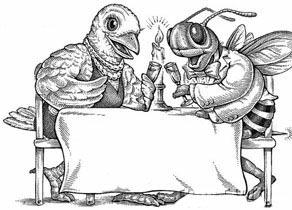

Your Harvest Pilgrimage Agent in the northern suburbs!

Call Melinda for all details on Visitations of Mary in October 2004 and other pilgrimages.
Doug Harman/Melinda DiBiase
Unit 5,9-11 Hutton St,Osborne Park
Tel.08 9443 6266,Fax 08 9443 6255
Licence

extension
Departs 29 Sept with Fr Patrick Vaughan prices from $4490
PATHWAYS OF ST PAUL
Athens • Ancient Corinth • Patras • Delphi
Meteora • Thessaloniki • Philippi • Kavala
Gallipoli • Canakkale• Pamukkale • Kusadasi
Departs 1 October 2004 with Bishop John Dew
Ephesus • Island of Patmos • 18 days $4870 priced at

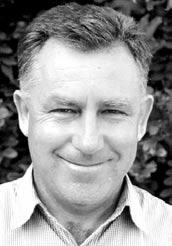

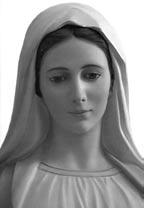
MEDJUGORJE PILGRIMAGE
The grace filled village of Medjugorje continues to draw streams of pilgrims from all over the world who journey to this place of peace where it’s reported Our Lady appears daily.
Frankfurt (1 night) • Medjugorje (7)
Optional Rome extension (3)
Departing 2004: 10 Oct - Fr Patrick Vaughan, 28 Oct - Fr Tony Schick MGL. $2695
prices from


The Record 26 august 2004 5 Flightworld Travel Perth (08) 9322 2914 Travelscene Lords (08) 9443 6266 FREE CALL 1800 819 156 All prices exclusive of taxes $4595 HARVEST PILGRIMAGE S Lic. 2TA 003632 VISITATIONS OF MARY Lisbon • Fatima Anniversary • Avila • Burgos Garabandal • Loyola • Lourdes • 15 days Optional Medjugorje extension Departing 10 October with Fr Paul Taylor $4395 prices from ENCOUNTER WITH ST FRANCIS Rome stay (3) • Cascia • Greccio • Siena Orvieto • Assisi stay (6) • Gubbio • La Verna $4095 Departs 5 November 2004 with Fr Tony Schick MGL Optional early departure to include Medjugorje (7 nights) at $4990 in total $4595 GRACES OF ITALY Padua • Venice • Ravenna • Florence Siena • Assisi • Loreto • Lanciano • San Giovanni Rotondo • Monte Sant Angelo Pietrelcina • 13 days • Optional Rome extension • Medjugorje
No 9TA 00512 Melinda DiBiase
Lords
OpinionReflection & opinions from around Australia &
But just how many is ‘few’? I Say, I Say......
“Lord, will those who are saved be few?” Fr Raniero Cantalamessa, the Pontifical household Preacher, looks at a question that interests many.
There is a question which the faithful have always asked themselves: Are there many or few who will be saved? In certain periods this problem became so acute that it caused terrible anguish in some people. The Gospel tells us that one day this problem was posed to Jesus. “A person asked him: ‘Lord, is it true that only a few are saved?’” The question, as can be seen, refers to the number: how many are saved, many or few? Jesus changed the centre of attention from the number to how it is possible to be saved, that is, the need to enter by “the narrow door.”
It is the same attitude manifested when addressing the topic of Christ’s last coming. The disciples asked him when the Son of Man would return and Jesus replied by indicating how one must prepare for this return [see Matthew 24:3-4]. Jesus’ way of acting is neither strange nor discourteous. It is simply the behaviour of one who
Rosary Bouquet 2004
The 48 Hour Rosary Bouquet for Our Lady’s birthday commences Sunday 5 September at 6pm and concludes Tuesday 7 September at 6pm.
This is the 16th year that the people of WA have been widely involved in this birthday gift to the Blessed Virgin Mary, Mother of the Church and Patroness of Australia.
The gift is free of any intentions – it is for Our Lady to use as She desires.
All are once again invited to take part in this birthday bouquet – praying the Rosary privately, or in groups and wherever convenient, linking parishes and people across the state with Her favourite prayer for 48 hours.
A Scroll has been prepared, dividing the 48 hours into halfhourly segments. Please forward your committed time slots to the addresses below so that they can be recorded on the Scroll. Individual names are not essential when a Parish is involved –name of Parish and hours covered is sufficient.

wishes to educate the disciples to pass from the level of curiosity to authentic wisdom, from the pointless questions that excite people to the real problems of life. From this we are able to understand the absurdity of those, such as Jehovah’s Witnesses, who even think they know the exact number of the saved: 144,000.
This number, which appears in Revelation, has a merely symbolic value (the square of 12, the number of the tribes of Israel, multiplied by 1,000) and is explained in this expression: “a great multitude which no man could number” [Revelation 7:9].
After all, if that is really the number of the saved, then we could spare ourselves the effort, we and they.
On the door of paradise the sign “Full” should have been written long ago, as at the entrance of some parking lots. If, therefore,

The Rosary Bouquet will be presented with the Offertory gifts at Our Lady’s Birthday Mass in St Mary’s Cathedral on Wednesday 8 September at 12.10pm, preceded (from 11am) by an hour of Eucharistic Adoration and Meditative Rosary.
Bishops throughout WA have been asked for their support and blessing. Once again, all Catholic schools in WA have been invited to take part in the Rosary Bouquet, acknowledging the power of children’s prayer.
On the right is the roster covering the 48 hours. Please forward committed parish or individual times to:
Margaret Bowen, 2 Suso St, Woodlands 6018, Phone 9446 1935, Fax 9446 1933, Email: bowen@iinet.net.au; Janis Mackin, Phone 9255 1382, Fax 9255 4182; Kathy Varady, Northam, Phone 9622 5963
Jesus is not interested in revealing to us the number of the saved, but rather the way to be saved, let us see what he has to say in this regard. Essentially two things: one negative and the other positive.
The first, what is worthless, and the second what is useful to be saved. The fact of belonging to a specific people, race, tradition or institution is not useful to be saved. Nor does the possession of a title lead to salvation — “We have eaten and drunk with thee” — but a personal decision, followed by coherent conduct in life.
This is even clearer in Matthew’s text, which contrasts two ways and two gates, one narrow and the other wide [see Matthew 7:13-14]. Why does he call these two ways, respectively, “wide” and “narrow”? Is the way of evil always easy and pleasing, and that of good hard and exhausting? We must be careful
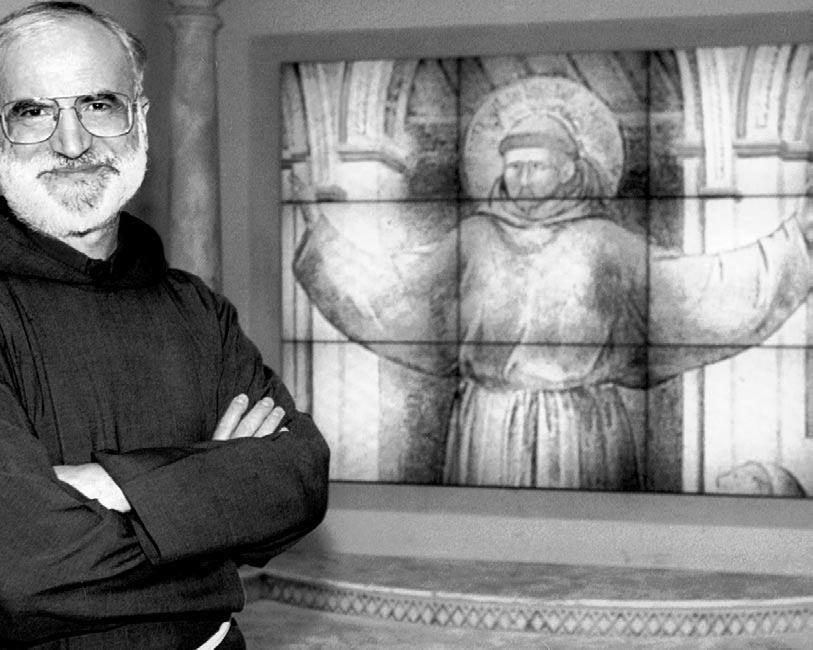
here, not to fall into the typical temptation of believing that everything goes magnificently well here for the wicked while, on the contrary, everything goes wrong for the good.
The way of the impious is wide, yes, but only at the beginning. The more they progress on it, the more it becomes narrow and bitter. In any case, it is extremely narrow at the end, as it leads to a dead end. The happiness experienced in it goes diminishing as it is experienced, until it becomes
nauseous and sad.There can be a certain kind of inebriation, as with drugs, alcohol and sex. An ever-stronger dosage is necessary to produce the same intense pleasure until the organism ceases to respond, and then comes the collapse, emotional and also physical.
The way of the just, on the contrary, is narrow at the beginning, but then becomes wide, as they find hope, joy, and peace of heart on it. It leads to life, not death.
- ZENIT
The Record 6 26 august 2004
Sun6-7pm........................................................................... 7-8pm........................................................................... 8-9pm........................................................................... 9-10pm........................................................................... 10-11pm........................................................................... 11-12pm .......................................................................... Mon12-1am........................................................................... 1-2am........................................................................... 2-3am........................................................................... 3-4am........................................................................... 4-5am........................................................................... 5-6am........................................................................... 6-7am........................................................................... 7-8am........................................................................... 8-9am........................................................................... 9-10am........................................................................... 10-11am........................................................................... 11-12am........................................................................... 12-1pm........................................................................... 1-2pm........................................................................... 2-3pm........................................................................... 3-4pm........................................................................... 4-5pm........................................................................... 5-6pm........................................................................... 6-7pm........................................................................... 7-8pm........................................................................... 8-9pm........................................................................... 9-10pm........................................................................... 10-11pm........................................................................... 11-12pm .......................................................................... Tues12-1am........................................................................... 1-2am........................................................................... 2-3am........................................................................... 3-4am........................................................................... 4-5am........................................................................... 5-6am........................................................................... 6-7am........................................................................... 7-8am........................................................................... 8-9am........................................................................... 9-10am........................................................................... 10-11am........................................................................... 11-12am........................................................................... 12-1pm........................................................................... 1-2pm........................................................................... 2-3pm........................................................................... 3-4pm........................................................................... 4-5pm........................................................................... 5-6pm........................................................................... Rosaries for the Bouquet Sunday Sept 5,6pm to Tuesday Sept 7,6pm
When Capuchin Father Raniero Cantalamessa preached to the Pope and others at the Vatican last Lent, he stressed the need for a personal encounter with Christ and ongoing conversion. Photo:CNS
Fathers really are important
With Father’s Day descending on us rapidly, it is time to start thinking about the real meaning and importance of fathers. It is nice for everyone to acknowledge this importance, but it is vital that men take it seriously.
Fatherhood lies at the heart of being a man, regardless of whether a man actually becomes a father. It defines the true value of the masculine half of humanity. It is defined both by what it is and by what it is so often mistakenly thought to be. It is perhaps easier to deal with the second state first.
The recent letter from the Congregation for the Doctrine of the Faith on the collaboration of men and women in the Church and in the world dealt predominantly with the importance of the feminine in society and in the Church. It attracted a fair amount of media attention for the succinct and charitable way that it dealt with the mistaken philosophies espoused by modern feminism, but few commentators (particularly feminists) seemed to note that these mistakes arose from attempts to redress an earlier problem.
The letter pointed out that when man and woman denied the difference between God and mankind, they also distorted the way they lived out their sex-
Editor and angels?
Thank you for inserting Bishop Holohan’s Pastoral letter on the Eucharist for Bunbury in The Record the other week. I found it encouraging. And I enjoyed many of the articles in the last edition of discovery, including the one about Balgo (I worked there for a few months), marriage, pro-life, helping to raise funds for Sudanese refugees and “An Angel’s love,” etc. God Bless You!
Perhaps a more dramatic front cover for discovery would help to sell it more. A picture of the editor surrounded by angels is an idea?
P Sellars
Subiaco
Ed: This would mean posing with my wife, my daughter and the ladies who work for The Record. Very much a thorn among roses.
Purgatory
Father Deeter’s article on Purgatory (Record, August 19) and a previous one on Limbo (August 5) are valuable in the sense that as a regular Mass attender I have heard very little for decades on these two important things. My only regret is that Father’s article will not reach a wider readership.
Because of the dearth of teaching on the subject, both the churched and unchurched now mistakenly presume that to appear before God in Heaven does not require a soul to be in the state of perfection and that belief in God is enough. We can only wonder about those who have had a terrible shock to find God still hidden from them after they die.
However, advancing age, ill health and losing a few dear friends and relatives, both
POBox 75, Leederville, WA 6902 Tel:(08) 9227 7080, Fax: (08) 9227 7087 cathrec@iinet.net.au
ual difference. This gave rise to a relationship that frequently killed loved and replaced it with self-seeking and domination of one sex over the other, leading to individual and social injustices.
This is a description of what fatherhood (masculinity) frequently is in practice, but which it is not in its nature. Self-seeking and domination have too often characterised family life and social structures in the past and in the present. Strangely enough, the Church is often blamed for these attitudes and actions, but this is chiefly because when most people cast an eye over history the only constant institution they can see is the Church, so the Church is presumed to be the source of whatever prevails.
The reality is that for most of her 2000 years the Church has been ignored by kings, emperors and minor potentates whenever it suited them – and that was most of the time whenever the Church demanded a moral standard not
Around t he tabl
churched and unchurched, eventually forces old-fashioned Catholics like me to reflect more on one’s own mortality, the afterlife and where we are likely to end up. Helped in these reflections is the thorough catechesis I was fortunate enough to receive as a young convert in the fifties. The Irish priest who taught me about the Justice of Purgatory wisely tempered it with sound teaching on God’s Love and Mercy.
During the course of these recent heightened reflections on death and dying I came across a little booklet The Amazing Secret of the Souls in Purgatory – an interview with Maria Simma which I found tremendously helpful and so hopeful that I read it often. The booklet was written by Sister Emmanuel of Medjugorje. Aware that the apparitions of Medjugorje have not yet received the approval of the Church, I read it to learn that Maria Simma, has been encouraged and supported in her apostolate for the Holy Souls by her bishop and parish priest. This humble Austrian countrywoman and devout Catholic has, since childhood, reportedly been visited many times by Souls in Purgatory. They have told her what saints such as St Margaret Mary, the Holy Cure of Ars and Blessed Faustina, among others, have already told us: that many departed souls are in desperate need of our prayers, especially our Masses.
Maria, who must be well into her eighties now, has a special
favoured by those involved in ‘self-seeking and domination’. This should not be a surprise in a society like ours that rejects the very idea of morality and sanctity and is preoccupied with denying the consequences in family and social life. After all, it was not the Church, but a very secular Supreme Court that ruled 100 years ago in WA that women law graduates were not persons within the meaning of the Act and therefore could not be admitted to the bar.
The life of the Church is described by the Church’s description of the feminine values of society – those that “elicit life and contribute to the growth and protection of the other”. Beginning with Jesus himself, the life of the Church has been the expression of precisely these qualities as people have been inspired to live a life of service and dedication to others.
Perhaps the Church’s defining influence on human history, particularly European history, has been her ability inexorably to
interest for us because she is a woman of our times. She also shows that as we age and become less active we can increase our apostolate for the those in Purgatory. She says that even though they suffer, they would not want to come back to earth even if they could because they see more than we, who are earthbound, of the Glory of God.
The booklet, which is conveniently small and inexpensive, can be obtained from Medjugorje Sentinel PO Box 746, Pennant Hills NSW 2120. I would urge people to buy a few to give away to encourage help for the Holy Souls who will not forget how we helped them and will one day help us.
Mrs P Halligan Mandurah
PS: Your paper continues to be an absolute little gem, which I wouldn’t miss for anything.
Ed: That’s worth half an hour off purgatory, I should think.
Sign of peace?
L et the Eucharist change us,” the pastoral letter by Bishop Gerard Holohan Bishop of Bunbury, published in The Record of August 5 was an exciting letter, and had some very good points in it.
However Point 5, “Practices we need to change”, deals with the issue of the “Sign of Peace.” In particular the sentence: “Priests too should no longer offer the Sign of Peace to people outside the sanctuary, except in special situations such as to offer the sign to grieving relatives at a funeral, causes me concern. Christ welcomed strangers, and the priest representing Christ should likewise reach out to his congregation.
This is a practice that surely should be encouraged, not discouraged. I agree that the Sign of Peace, should not be disruptive with people jumping out of aisles
lead men towards respect for women and all they represent as men learn to love as Christ loved the Church, laying down His life for her.
This is the central characteristic of Christian marriage, supported by the power of the Resurrection, and it is the essence of true fatherhood.
It is what men must aim for instead of self-gratification and domination. It is what young men must be taught in place of the trash that so often passes for ‘sex education’ or ‘sexual health’ in the schools of our society.
Male/female relationships can only be properly understood, taught and developed in the context of the marriage relationship – the lifelong commitment to love one another in fidelity which is in everyone’s heart even if not always in their desires.
It is an elementary fact that marriage is the relationship in which most people wish to and will spend the greatest part of their adult life.
All education in relationships should start from that undeniable truth of human nature. Regardless of whether one actually enters the married state, this truth will always be the foundation of good human relations. Teaching anything less is a betrayal of the young, and a threat to the development of true fatherhood.
to hug someone several pews away. This sort of practice should be discouraged, but the priest exchanging the Sign of Peace with members of the congregation nearest him should not be discouraged. Yes, practices do need to change. Too often the clergy are seen as distant and inaccessible. Here in the celebration of the Eucharist, is a perfect opportunity for the priest through the Sign of Peace, to join with his congregations in sharing the fruits of the Holy Spirit.
Peter Golding
Alfred Cove
Available me
Full marks to anonymous correspondent number 2 in the August 12 issue, I would have placed your letter first, not last! To anonymous correspondent number 1 – yes, as my original letter allowed, the phone has its role. However, our society worships instant gratification and hence is drowning in phone calls, e-mail etc. One of the many problems with this is the decreased attention available for an individual item of communication, eroding traditional courtesies such as not leaving a letter unanswered. As for the desire we all share that communication be immediate: God is always instantly contactable; the line is never busy and it’s free! Perhaps the ‘poignant last messages’ from September 11 victims by mobile phone would have been better directed to Him.
In a less wordy, more prayerful and courteous world I would have e-mail, a fax-machine and mobile phone. As things stand I strive to keep abreast of the landline, answering machine and ‘snail mail,’ being my own secretary. How much easier it is on average to leave a phone message than to return it!
Furthermore, in almost 6 years
as a priest it has not been common for the matter of a phone call to be commensurate with the intrusiveness of the medium. Generally the approach would have been better made on paper, or in person, eg before or after Mass, or at home for my friends.
But the phone panders to mental laziness in a society of the ephemeral and phrenetic – all too often, abortive attempts are made to arrange events at the last minute.
I am far more contactable than priests have been for thousands of years. For most of the Church’s existence it was sufficient for a priest to deal with approaches in person or by letter. The printing press brought extra work for priests.
Then, in little over a century, came an explosion of communication media, including land lines, faxes, answering machines, e-mail and mobile phones. How to manage this? By praying less? And yet there is more need for prayer than ever before.
Have these relentlessly increasing demands by the People of God been accompanied by corresponding sacrifices to help shoulder this burden, eg by increased donations to the Church so every priest can have his own secretary? Even then moderns would complain if he were praying and the secretary took the call.
So to conclude, anonymous correspondent number 1, you are free to believe that I pray too much, though it could also be that I should pray more and that I should make room for this by eliminating the answering machine.
Whatever of that, the endlessly spiralling demands for instant contactability must change in favour of attitudes that are less destructive of traditional courtesy and piety.
Fr David Watt Chaplain, Edith Cowan University
dnuorA
e The Record 26 august 2004 7
e
t eh lbat
Waiting for the world to intervene
T h r e e C h u r c h a g e n c i e s a r e a p p e a l i n g f o r o u r s u p p o r t t o h e l p o u r b r o t h e r s a n d s i s t e r s i n S u d a n W e m a y n o t b e a b l e t o d i r e c t l y i n f l u e n c e e v e n t s b u t w e c a n r e a c h o u t t h r o u g h t h e s e g r o u p s
These people should evangelise me: priest Refugees lose in war of broken promises
M i s s i o n a r i e s s a y p e o p e n S u d a n , C h a d e m b r a c e C a t h o i c f a t h
By Tony Staley
People in Sudan and Chad are embracing the Catholic faith and, in some cases, transforming their lives, said two missionary priests of the Comboni order.
The priests — one American and one Sicilian — also said their lives have been changed as they witnessed the faith of the Africans, who deal daily with disease, hunger and — in Sudan — war.
“You go in a village where you have a few Christians and find the chapel full,” said Comboni Father Peter Ciuciulla. “I asked, ‘Why are you here if you are not Christians?’ And they would say, ‘Father, you have come to speak the word of God. The word of God is for everybody, not only for Christians. So we are here to listen to the word of God,’” Father Ciuciulla said.
When they see Jesus’ body on a crucifix, “they see themselves, how they are suffering, and see that their sufferings are not foreign or strange for God. God himself is suffering as they are. They feel this very much,” Father Ciuciulla said.
“They should evangelize me,” added the priest, who visited the US in August.
Father Ciuciulla has worked in Chad for 12 years.
Comboni Father Dave Bohnsack, an American who worked in Sudan for eight years, said Christianity changes how people act. For example, he said, when two neighbouring tribes converted
to Catholicism, they quit battling each other and built a single church where both tribes worship together, rather than separately as they did before.
Father Bohnsack said his parish has about 2,000 catechumens each year; within two years they become Catholic. Father Ciuciulla has about 3,000 a year in his parish; they spend four years preparing for baptism.
The two priests said they rely mainly on lay catechists who teach the catechism and lead Sunday worship when there is no priest — which is nearly every week.
Father Ciuciulla and one other priest serve a parish of 2,900 square miles and 120,000 Catholics. They try to get to the community centres in the parish once a year to celebrate Mass and hear confessions.
Father Bohnsack, who is beginning a new assignment in Chicago, said he and two African priests served 250,000 Catholics at 300 centres. He said at times the priests traveled up to 450 miles to meet with parishioners.
When the priests visit, people walk 2530 miles to attend Mass. Before Mass, the priests spend four or five hours sitting on a chair under a tree or small shelter as people wait their turn to kneel on the ground for confession.
The two priests said most people struggle daily to survive.
Africans are extremely hospitable and always insist that visitors receive the best, so when they could the hosts would treat the priests to chicken or goat. The missionaries said it was impossible to refuse, even though the people needed the food far more than
they did. In Sudan and Chad, the men eat first, then the women and finally the children.
Often there is not enough food for the children, who dig in the garbage or take leftover food from tables in outdoor restaurants, the priests said.
Food becomes scarce in June and July, when the previous year’s harvest is gone, so the Combonis buy and store grain early in the harvest cycle when prices are lowest, then give it to the people when food is scarce and expensive.
Many people in Chad and Sudan have malaria, they said. Both priests experience relapses that include a fever, aching joints and no appetite.
“But, if you don’t have a high fever, you keep working and it passes in about a week,” Father Ciuciulla said. Malaria leaves the people susceptible to diseases such as cholera or meningitis. AIDS is a growing problem, though not on the scale as in South Africa or Zambia, the priests said.
Father Bohnsack said working in Sudan has made him more aware of the need for living simply and of the importance of prayer and work. He cited Africans’ strong faith and belief in the Eucharist and their refusal to blame anyone or become angry when bad weather destroys their crops.
Both priests said they noticed that people in countries such as Italy and the United States complain all the time.
“It’s never enough,” Father Ciuciulla said. “They always want more, and they have everything. I’d like to say, ‘Have a look at what’s happening on the other side of the world. How can you complain?’” - CNS
Children fall ill after the rain
By Margaret Ann McShane, Caritas/ACT
N
yala airport is similar to its counterparts across the globe. Weary travellers on homeward journeys wait for their luggage while an air of anticipation surrounds those just beginning their trip. However, on the outskirts of the airport, a very different type of reality is unfolding. If instead of heading for the centre of Nyala as most travellers do, you turn to the wide open spaces where only ruined buildings litter the landscape, after a ten minute drive you reach Dirage, one of the many unregistered refugee camps in Darfur.
A few weeks ago it wouldn’t have taken as long to reach the Internally Displaced Persons. The camp was initially based round the ruined buildings, their brick walls providing some shelter for the 15,000 families who gathered there.
However, amongst the preparations for Kofi Annan’s visit, the camp on the airport road was dispersed. About half moved to Kalma Camp, a half hour’s drive away, and the other half settled in Dirage, while Caritas partner, Sudanaid, ook some into the local community where they are caring for them.
The refugees give us a warm welcome. They are keen to share their stories and to explain their needs.
Howa Hassien, aged 16 (see centre picture on this page), is sitting outside a basic shelter, which provides no protection from the sun or the rain. She has an air of resignation as the wind whips the sand around her. Her only response is to cuddle her three-month-old daughter, Ihlam, closer.
“When the Janjaweed attacked our village, they murdered my husband,” she said. “I came here with my three children and the rest of my family. At home,
we had a crop but the Janjaweed took it. Now, I don’t have enough to eat and neither do the children. I collect and sell leaves to earn a little money.”
Lack of medicine is a concern for most of the mothers in the camp. Their children are sick and they are frustrated and worried at their inability to help. One night of rain caused many of the children to develop coughs. Others are suffering from malnutrition.
Caritas has launched a joint appeal with Action by Churches Together (ACT).
Caritas Australia has made an initial commitment of $250,000 to contribute to the provision of food, clean water, shelter, sanitation, mobile health clinics and trauma counselling
C a r a s A u s r a a s a c c e p t n g d o n a t o n s o t h e S u d a n H u m a n t a a n c r s s P e a s e c a 1 8 0 0 0 2 4 4 1 3 o g o

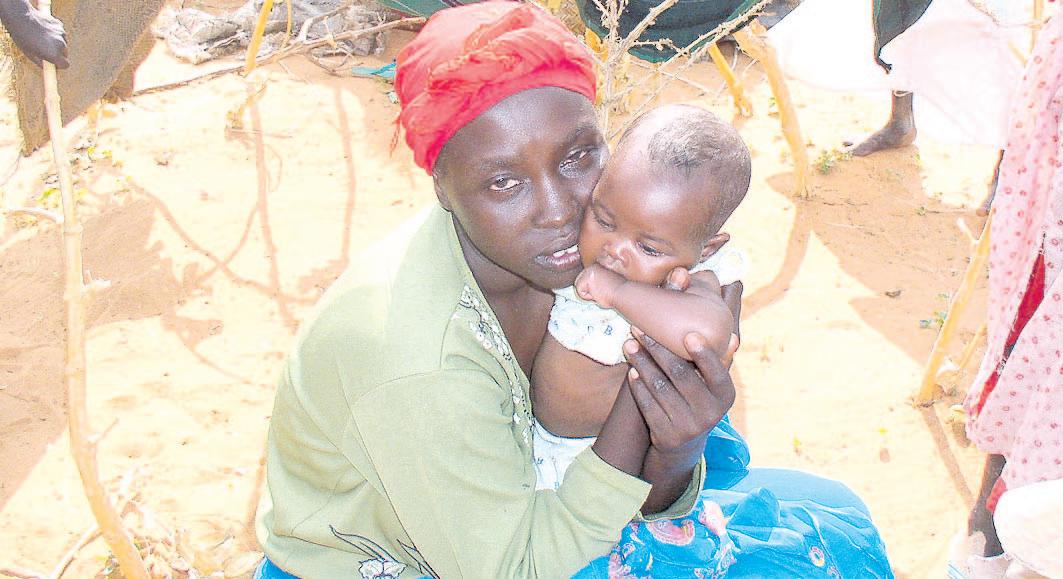
response is to cuddle her three-month-old daughter, Ihlam, closer. “When the Janjaweed attacked our village, they murdered my husband,” she said. “I came here with my three children and the rest of my family. At home, we had a crop of dura but the Janjaweed took it. Now, I don’t have enough to eat and neither do the children. collect and sell leaves to earn a little money.”

U N o f f c a s i n C h a d b r a c e f o r m o r e r e u g e e s f r o m w e s t e r n S u d a n
By Stephen Steele
UN refugee officials in Chad said the agency is bracing for the arrival of about 100,000 refugees from western Sudan as the situation there deteriorates. The officials said they expect a crush of refugees to cross the border before the end of 2004, joining the nearly 200,000 Sudanese refugees already in eastern Chad.
About 500 new refugees arrived in Chad from the Darfur region of Sudan in mid-August, telling UN workers that their camps and villages were being bombed daily by government aircraft and looted by Arab militia, known as Janjaweed.
Some of the refugees walked for 12 days across the Sudanese desert to reach the Chad border, taking a more difficult route to avoid attacks by the Janjaweed, UN officials said.
“We’re hearing stories of there not being enough food or water, of families choosing to leave sick people behind,” said Fatoumata Kaba, spokeswoman for the UN High Commissioner for Refugees.
The fresh attacks came as Sudan nears a mid-September UN deadline to end attacks against black Africans in Darfur and to rein in the Janjaweed or face unspecified international action.
UN officials said the Sudanese government had made a series of “broken promises” to the international community.
“It appears Sudan is not keeping its promises to the international community,” said Lino Bordin, deputy head of mission for the UN High Commissioner for Refugees in Chad. “It is very difficult for them to control the Janjaweed at the moment.”
Bordin, who traveled to the border to meet with the new arrivals, said most had no possessions, and some had injuries incurred either in the attacks or from the difficult journey across the desert.
He said the new refugees told UN staff that the black Africans in Darfur were being rounded up by the Sudanese government and were held in camps patrolled by the same people who have terrorized them for months.
“They are controlled; they cannot escape. They are afraid to be found in the open,” he said.
Those who flee the air raids have their homes looted by the Janjaweed, Bordin said.
Because of the instability in Sudan and the logistical difficulties of the region, the United Nations is expecting the refugee camps in Chad to remain open for the long term.
“The situation is still very bad (in Darfur); there is no security at all,” Bordin said. “Even if the situation calms down, the people need time to rebuild their lives,” while the government needs time to provide security.
“The people need to have confidence in their government before they will return, and that will take a lot of time,” Kaba said.
The refugee camps are already facing a myriad of problems, including overcrowding, and an influx of 100,000 new
re ugees in such a short period of time will test the United Nations’ ability to care for such a large number of people over very difficult terrain.
“It’s a worrisome situation,” said Nicole Porrier, program manager for the US Catholic aid agency Catholic Relief Services in Chad. CRS is the US bishops’ international relief and development agency.
“If the food pipeline’s not looking so hot and they’re expecting a large influx of people, what’s going to happen?” she asked.
Heavy rains have washed out roads leading to many of the camps; other roads have travel restrictions as a protective measure against the rainy season. As a result, some camps are facing food shortages, said officials with the World Food Program.
Further complicating matters, a Centres for Disease Control and Prevention survey of the camps in June revealed alarming rates of malnutrition among children under 5 years old, said Robert Gillenwater, head of logistics for the World Food Program in Chad. In response, the World Food Program started allowing pregnant woman and those with children under 5 to receive food above their daily rations. But in doing so the program dipped into its food reserves, meaning that several camps could face serious food shortages by the end of September, he said.
Gillenwater said the World Food Program could start air dropping food into Chad by late August or early September; it began air dropping food into Darfur in late July.
“I hope we start doing it sooner rather than later,” he said. - CNS
C a t h o l i c M i s s i o n
Australia currently has four religious missionaries working in Sudan, one Christian Brother, two OLSH Sisters and one Salesian Priest.
If you would like to help Catholic Mission continue to send aid to Sudan and achieve their vision of Life for All, please call 1800 257 296 or visit www.catholicmission.org.au to make a donation.
A i d t o t h e C h u r c h i n N e e d
Aid to the Church in Need has an appeal to help the Church in Sudan, particularly the Save the Saveable schools. For more information or to make a donation, contact Aid to the Church in Need, PO Box 6245 Blacktown DC NSW 2148, Phone: 02 9679-1929 or visit www.aidtochurch.org
C a r i t a s ( S e e p a g e 8 )
Is working in tandem with Action by Churches Together. Their appeal can be supported by contacting 1800 024 413 or go to www.caritas.org.au to make on online donation.
The Record 26 august 2004 9 The Record 8 26 august 2004
o w w w c a r a s o r g a u t o m a k e o n o n n e d o n a o n
Sudanese refugees find shelter under a tree in the village of Nyala in the Darfur region of western Sudan in early June. Millions of Sudanese have fled from their homes to escape attacks by Arab militias and Sudanese government forces aimed at cleansing the population of non-Arab Muslims.
Photo:CNS
Howa Hassien (16) is sitting outside a basic shelter, which provides no protection from the sun or the rain. Its scant bamboo frame has only a few rags attached. She has an air of resignation as the wind whips the sand around her and blows through the bamboo. Her only
Photo:ACT/Caritas
Sudanese security personnel drive past a group of displaced Sudanese schoolchildren in the Abushock camp in the Darfur region of Sudan on Aug. 16. The Government has been accused of ethnic cleansing. Photo:CNS
New feet tread old path
F r o m C a n t e r b u r y t o R o m e : P i l g r i m s a r e r e d i s c o v e r i n g t h e a n c i e n t r o u t e
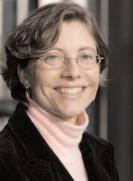 MBy Carol Glatz
MBy Carol Glatz
ost of the ancient roads to Rome have become busy thoroughfares or superhighways swarming with speeding Fiats and Alfa Romeos. But one route still remains largely unspoiled by today’s traffic, instead dotted by an occasional cow or a moped. This 2,000-yearold road, known as the Francigena Way, was once a crucial trading corridor and later a popular pilgrim’s path starting from England’s North Sea and leading to the eternal city of Rome. Julius Caesar first established the Francigena’s network of roads in 58 BC. “It was the backbone of Western Europe, linking the North with Rome,” said Father Bernard Ardura, secretary of the Pontifical Council for Culture.
Later, the Francigena Way provided Europe’s Christian pilgrims with the fastest and safest route to reach the tombs of Sts. Peter and Paul in Rome. Even Sigeric, the 10th-century archbishop of Canterbury, England, trekked the 1,100-miles to receive his pallium from Pope John XV.
But in the mid-17th century this “way of the Franks” died out. By the end of the 18th century, no one but Napoleon’s troops were trudging its byways until some modern-day pilgrims rediscovered the Francigena Way’s historical, artistic and religious riches and started working for its revival.
“An association was started up in 1997 to get people to know about and re-establish its cultural value”, said Father Ardura, whose council supports the work of the International Francigena Way Association.
Father Ardura said the route — which starts at the Canterbury cathedral in England and cuts across France, Switzerland and Italy — helped spread different cultures and build Europe.
Revitalising the route for modern pilgrims “would be a reawakening of our common Christian heritage,” he told Catholic News Service.
The founder and president of the International Francigena Way Association, Adelaide Trezzini, agreed, saying, “The pilgrimage is a good way to unite Europe’s people and to find and touch these (Christian) roots.”
“By walking on these Roman roads, passing by convents and cathedrals, you feel and touch history with your feet,” she said.
Though today’s pilgrims do not have the same worries as medieval pilgrims — like running into hungry wolves or bandits — the first brave hikers of the Francigena Way in the 1990s faced severe logistical problems.
Proper maps were nonexistent,

signs indicating the route were sporadic, and finding a place to stay was a real ordeal until Trezzini and her organisation compiled a guide listing all the monasteries, convents, churches and private facilities along the route that would take in the wandering traveller for free or at low cost.
ent culture; it’s travelling in a country one step at a time,” he told CNS. “I found it fascinating to stay in a 15th-century monastery or what once was a hospital of the Knights Templar, to have nuns serve me warm soup or sit with Capuchin monks in the evening, sipping wine,” he said.
greeted by a priest who takes them to the tomb of St Peter in the grottoes below.
Life deserves respect
By Carol Glatz VATICAN CITY (CNS)
God's gift of life and nature demand humankind's awe and respect, not arrogant manipulation, said Pope John Paul II.
"Man's attempt to take on the source of life through experiments of human cloning" is one of many examples of "the violence with which man tries to appropriate for himself what's true and right," the Pope said in a written message to the Catholic lay movement Communion and Liberation released on August 23 by the Vatican
The only limits man sets for himself in his drive toward progress "are those set and continually overcome by what is technically feasible" at the time, he added.
Humankind's pursuit of progress should instead be limited by ethical concerns, including "truth and justice," said the Pope.
Communion and Liberation participants were celebrating the renewal movement's 50th anniversary. In his written message, the Pope said that the theme of this year's Rimini meeting "stimulated reflection on the thorniest questions dramatically facing man today."
The theme was "Our progress does not consist in presuming we have reached our goal, but in continuously striving to achieve it."
The Pope said, "For the Christian, the mystery of being is so deep that it is inexhaustible to human inquiry."
“though most of the pilgrims tackling the Francigena Way are from northern Italy or France, the trail has attracted people from as far away as Australia and South Africa, because they see Europe as being the base of Christianity and the development of the Christian faith.”
The association supplies pilgrims with the guide and an official “pilgrim’s passport” so potential hosts know they are legitimate, Trezzini said.
Many hotels, bed-and-breakfasts and hostels offer passport holders 10 per cent to 20 per cent discounts “because they appreciate the idea of pilgrimage, and they want to help out,” she said.
Trezzini said though most of the pilgrims tackling the Francigena Way are from northern Italy or France, the trail has attracted people from as far away as Australia and South Africa, “because they see Europe as being the base of Christianity and the development of the Christian faith.”
One of the first Americans to cover the entire 1,100 miles was Brandon Wilson of Hawaii.
A pilgrimage is a “great way to get to know people and a differ-
But the pleasures did not come without pain.
“There were some days I hurt so bad I didn’t want to get out of bed,” Wilson said. What made him bear the blisters and the 18-21 miles a day — including travel through the Alps — was “tenacity. I felt I was carrying on a tradition. ... I had the feeling of past pilgrims with me along the way.”
Trezzini said she wanted to make sure pilgrims travelling the Francigena Way received some official recognition for all their hardship when they reached their goal of St Peter’s Basilica.
She said she worked with the Vatican to create a certificate for all pilgrims who make it to the basilica after covering at least 81 miles on foot.
When the Francigena Way pilgrims present their special passports at the sacristy, they are
“He reads them a passage from the Bible in their own language, presents them with the signed parchment,” and has them write their names and comments about their pilgrimage in a large registry kept in the basilica, she said.
“The people aren’t always Catholic, but they are moved and appreciate it all the same,” she added.
Though some people may start out to do the Francigena Way for the physical challenge or for a cultural adventure, Trezzini and Wilson said everyone will experience something spiritual at some point along the journey. A pilgrimage “helps you readjust your priorities.
There’s all that silence and time for contemplation that it helps you re-prioritise, re-examine your life and see what’s important,” Wilson said.
Trezzini noted many pilgrims learned to “walk with the spirit of putting themselves in the hands of providence.”
The lack of accurate signs and other difficulties along the stillfledgling trail have left many pilgrims “desperate, sitting on the kerbside not knowing where to go,” she said. “But always something would happen, and someone would come by to point them the way,” she said.
That fellowship found on the trail led Wilson to pray for bringing peace to the world, “because I could see (peace) was about the way we treat each other,” he said, adding that if people’s needs were taken care of “there would be less strife in the world.” - CNS
Christ teaches that respect must be made for the human being and that every type of research must respect life and "be at its service, not manipulating it according to some project" devised with "arrogance" in wanting to better that which has been made by God, the creator, he said.
Anyone who decides "with the pride of Prometheus to become the arbitrator of what's good and bad makes progress his absolute ideal and then is crushed by it," he said.
The Greek god, Prometheus, stole fire from heaven for the benefit of mankind; Zeus punished him by chaining him to a rock, where an eagle would come each day to eat his liver, which grew back at night.
The Pope said Christians are called to look upon the gifts of nature with humility and "awe for its beauty and logic."
"Only this humility before the vastness and mysteriousness of the created can save man from the menacing consequences of his own arrogance," he said.
The Record 10 26 august 2004
k n
o w n a s t h e F r a n c i g e n a W a y
Bindoon celebrates opening
C o n t i n u e d f r o m p a g e 3 involved in the manual labour of building the Church, said the event has changed her life.
“Everything came together,” she said.
Fr Fox said the dedication was a wonderful climax to all the hard work contributed by so many members of the parish and people outside the parish.
“The opening day exceeded our expectations,” he continued.
“I would like to thank all those who supported the parish in our fundraising efforts in supply of materials, liturgical items or the labour supplied on site and all the assistance we received in many other ways,” Fr Fox said.
“The Cathedral choir was also a special feature for the day,” he
said. Archbishop Barry Hickey presided for the occasion, recognising the faith and energy of the people of Bindoon who had worked together to build the new church.
“It will be a landmark for years to come,” he said.
“And also a landmark and beacon of light and faith to the people who erected this church,” the Archbishop said.
The opening and blessing started with Archbishop Hickey formally receiving the architectural plans for the new church.
During the blessing and dedication relics of St John Vianney were placed inside a compartment of the altar.
Fr Fox acquired these during a pilgrimage to Rome in 2000.
“When we think of a church we think of a temple,” the Archbishop said.
“Jesus himself went to the temple,” he continued.
In order to help the fundraising efforts, people are invited to donate to the cost of a pew at $1,500 each.
An engraved plaque with details of the benefactor, or the person/family in whose memory the pew is donated, will be attached to end of the pew.
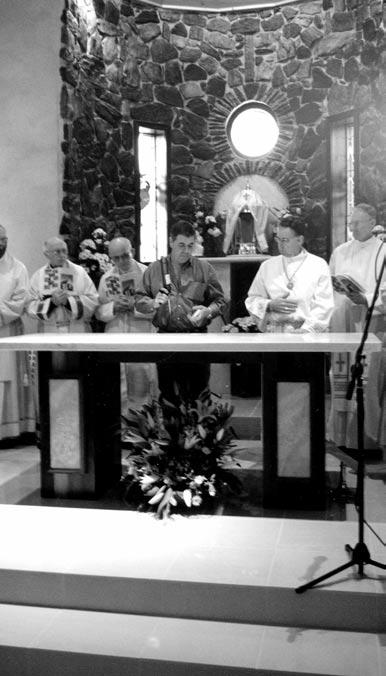
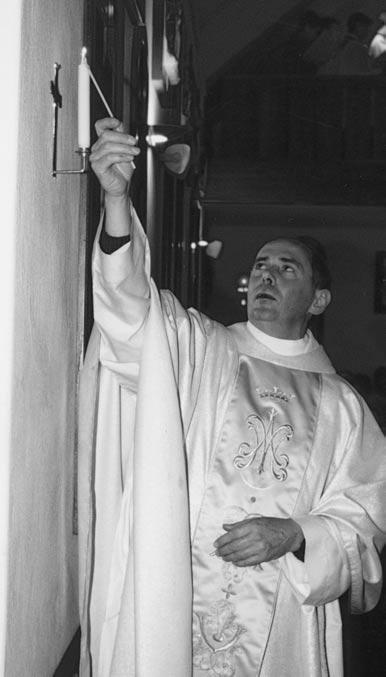
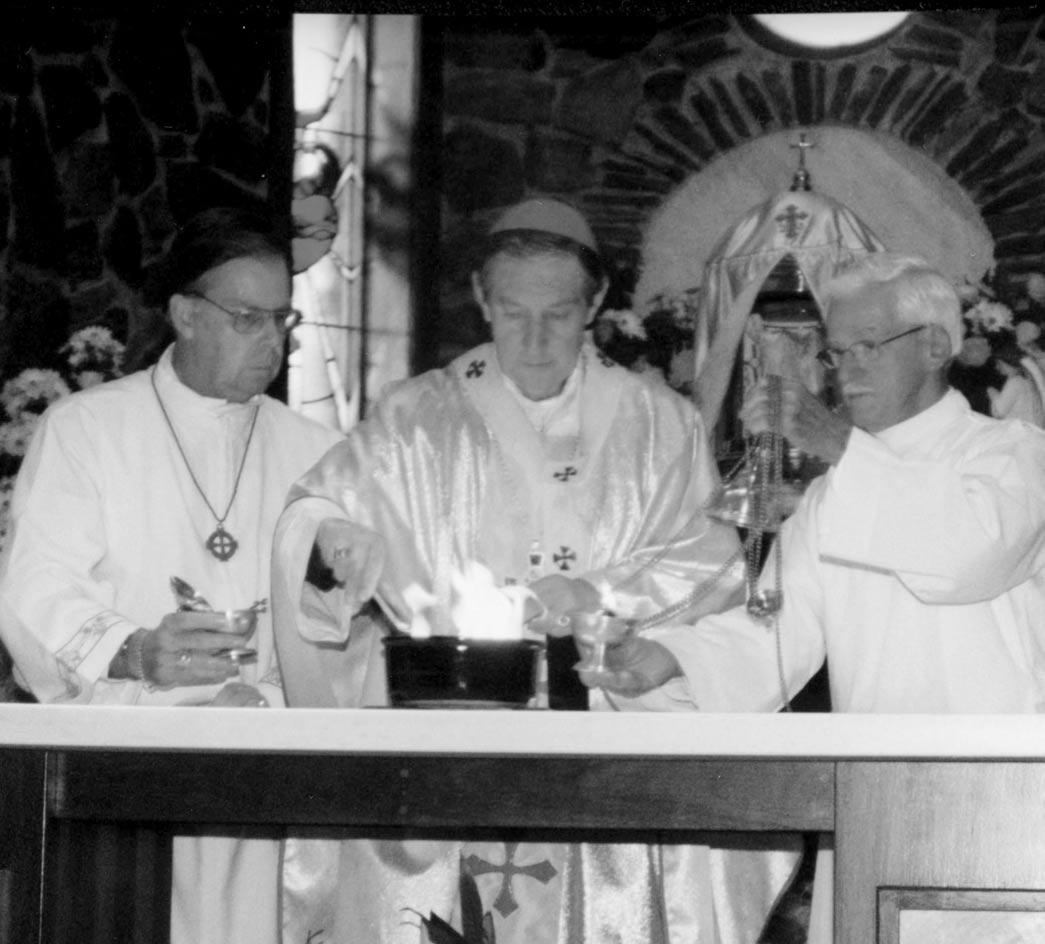

Yet another wild conspiracy is media fact
The
vast amount of
ignorant ink being spilled indicates The Work is the latest media bogeyman
By Msgr. Richard Antall
If we needed any more evidence that Opus Dei has been demonized in the modern mind after the dreaded The DaVinci Code, it has come with June’s issue of Vanity Fair, the glossy magazine of the would-be chic.
On a page appropriately titled “Vanities,” Opus Dei is put on a par with cults like Scientology, the Kabbalah (Hollywood Version, Madonna prominent among its adepts) and Kundalini yoga.
I don’t actually know how to categorize the other object of Vanity Fair’s attention, “Bilderberg” - a kind of capitalist moveable feast and think tank, the favourite of paranoid conspiracy theorists but not a sect by any means.
Each “organization” is given a
profile in a few phrases, some mere jokes, some outright lies, some only partially false. Everything is on the level of cliche, but some ideas have more relationship with the truth than others.
For instance, the motto of Opus Dei is given as “Childhood in front of God,” which certainly is a great part of the spirituality of “The Work” (as Opus Dei is called in English), expressed in St Josemaria Escriva’s “The Way” in this form: “The way of childhood. Abandonment. Spiritual childhood. All this is not utter nonsense, but a sturdy and solid Christian life.”
Vanity Fair compares this motto with the “motto” of the Kabbalah crowd - “you don’t look Jewish.” If you are wondering where the joke is, I think you are on to something.
Each of the “cults” has a front man.
Opus Dei has Supreme Court justice Antonin Scalia, whose son is priest of Opus Dei.
Each has a favourite ritual. Vanity Fair decided Opus Dei’s, “heroic minute” (when you just wake up and need to get out of bed and on your way) as a rite of some kind.
The prophets are listed, so that St Josemaria keeps company with quite a diverse crowd.
The “text” of each movement is listed: “The Way” is called “a collection of epigrammatic spiritual counsels.”
The “password” of the followers of St Josemaria is listed as ‘serviam’ (Latin for “I will serve”).
The bete noire of Opus Dei is said to be “Vatican II” - an outright lie that ignores the fact that men from Opus Dei served at the Second Vatican Council and influenced the teaching about the mission of the laity in the world and the continuing formation of priests.
Another lie is in the category
“Past Ties in the Closet,” for which the answer is “To Fascism.
“This is supposed to describe the very complicated relationship
Opus Dei had with Franco’s Spain. Most of the almost 300 martyrs of Spain of the 20th century, killed by anarchists and communists during the Civil War, could be accused of seeing Franco’s cause in a better light than that of the Stalinist communists who eventually controlled “republican” Spain.
The Work believes in the usefulness of physical penances.
Like St Ignatius of Loyola, founder of the Jesuits, St Josemaria saw the benefit of the cilicio, described by Vanity Fair as a “barbed thigh chain.”
This and other penances, including “the discipline” called by the Vanity crowd a “flagellation strap”- and sleeping on the floor once a month are tactics used on occasion and quite sparingly for submitting the senses to the will.
Most of the great saints have had recourse to similar practices, along with fasting and keeping vigils.
They are the equivalent of put-
ting a pebble in your shoe to help you feel the sufferings of Christ, to use an example from a text in Godspell, a musical work not usually associated with cults.
Vanity Fair gets a few things just dumb wrong about Opus Dei. The “elite corps” of the group are the “supernumeraries.” It is not very convenient to talk about the “elite” in a structure of the Church like the Opus Dei, but the “numeraries” would be more correctly described as such.
The “signature outfit” of Opus Dei is certainly not the “black robe” or cassock, because only a tiny minority of people in The Work are priests.
What is clear from all of this is that Opus Dei has become a kind of bogeyman for the onceoverlightly gang.
Despite numerous publications and the canonization of its founder, even many Catholics do not know what Opus Dei is about. That ought to be remedied.
Msgr. Antall is a missionary
The Record 26 august 2004 11
Archbishop Hickey, watched by his Master of Ceremonies, Doug Williams, lights a symbolic fire on the surface of the new altar in St Anne’s.
Parishioners wait for the commencement of the dedication as choristers from St Mary’s Cathedral warm up.
Right: A parishioner sets relics into the new altar. Far right: Fr Fox is lighting candles set on the wall of the new Church as part of the dedication ceremony. Photos:Jamie O’Brien


Pope thanks God for trip
John Paul II offered God thanks for allowing him to make a pilgrimage to Lourdes, France, and offered special thanks to his fellow Poles for “having supported me with your prayers” during the Aug. 14-15 trip. The Pope, appearing a bit tired, read only about a quarter of the main Italian text prepared for his August 18 weekly general audience, although he did read the entire texts of his messages of thanks in French and in Polish. The audience was held in the courtyard of the papal summer villa at Castel Gandolfo and, as in weeks past, did not include the usual multilingual summaries of the Pope’s main address. Greeting French speakers, the Pope said, “This morning I want to give thanks to God who, in his benevolence, allowed me to go on pilgrimage to Lourdes,” the town in the French Pyrenees where the Blessed Virgin Mary appeared in 1858 to St Bernadette Soubirous. Pope John Paul also thanked Mary for “the climate of profound recollection and intense prayer” during his visit. - CNS
‘Family first’
A Vatican representative to a meeting of the Federation of Asian Bishops’ Conferences urged participants to defend and promote traditional family values. “The family must be considered as a starting point of any human and Christian experience,” said Archbishop Robert Sarah, secretary of the Vatican’s Congregation for the Evangelisation of Peoples. “We first learn of God, Christ and the things of the Spirit in the familiar surroundings of our homes and families. Deprived of that, faith and human and moral values fail to root.”
The Archbishop made his remarks on August 17. The assembly’s theme is “The Asian Family Toward a Culture of Life.” Archbishop Sarah, an African from Guinea, said the modern Western concept of marriage and family life is headed toward a crisis, with legislators increasingly ignoring “the traditional family unit as essential to the well-being of society.” For this reason, he said, “the Catholic Church and the Asian and African societies must stand firm in presenting marriage and family life as something precious.” - CNS
International News
Catholic news from around the world
Missionary’s fight against Mexican drug dealers made into film
By Georgina Stark
Prayer was often all Oblate Father Ted Pfeifer could fall back on while working as a missionary among poor communities in the mountainous state of Oaxaca in southern Mexico.
When he arrived in 1963, he never imagined the area would be taken over by gun-toting drug traffickers, who forced his dirt-poor parishioners to grow heroin poppy and marijuana.
His defiance of their violence and manipulation eventually led to the drug traffickers, known as “narcos,” turning their AK-47s on him.
He survived the attack. “Only the Eucharist and prayer are what kept me going. I had nothing else,” Father Pfeifer, now 71, told the Southern Texas Catholic, newspaper of the Corpus Christi Diocese.
Father Pfeifer’s story has been made into an independent film, The Oath, which was shown in a private screening on August 6 at the Texas Independent Filmmakers Festival in San Antonio.
Father Pfeifer — born one of 11 children to a migrant farmworker family in Alamo, Texas — began working with the poor Zapotec Indians in the town of San Pedro Martir di Quiechapa in Oaxaca a few years after his 1959 ordination in San Antonio as an Oblate of Mary Immaculate priest.
The area was home to around 25,000 Catholics, scattered in small villages across a large mountain range. The villagers had never seen electricity or running water, and had not had a priest in more than 40 years.
More than 30 missions “needed to be visited, by mule or on foot because there were no roads at that time and they were scattered,” said Father Pfeifer.
The residents had no health care facility or doctors, so he
A life like this
became a paramedic and set up a clinic. He eventually lost count of the hundreds of babies he delivered and baptised.
“We saved a lot of lives, especially infants who often suffered from diarrhoea which could kill them in hours,” he said.
In 1975, the priest started noticing visits from northern Mexicans looking for a good place to grow the red heroin poppy.
“They would go to the villages, befriend the people and give them a lot of beer and large sums of money” to encourage them to grow drug plants, he said.
The priest said the families did not know what they were involved in by growing the drugs, except that it paid them 10 times what they could make from their vegetables and beans.
The traffickers had confiscated the Indians’ choicest lands, leaving them little acreage to grow the food they subsisted on. The traffickers used violence against those who complained, whose drug crop was not up to par or who disagreed over payment.
In an area with no police force and no telephones, they abused the women and started assassinating the local people.
Father Pfeifer began keeping a record of his murdered parishioners — up to 150 names in 10 years.
Father Pfeifer turned in the names, dates and places of the murders to the attorney general in Mexico City and the district attorney in Oaxaca. He even turned in the names of traffickers believed to be responsible, but complained that officials did little.
The army came, but the traffickers went into hiding.
“They go into caves in the mountains, they know all the trails and come back out when

(the army) leaves,” he recalled.
In 1987, six traffickers attempted to assassinate the priest on a mountain road. Word had already gone around the villages that the “narcos” had a contract out on the priest.
Father Pfeifer wondered how the townspeople would react to the shooting. His answer came when the parish called a meeting to ask their priest what they could do for him. He offered to leave, knowing that they might also be targeted just to get to him. But they begged him to stay. So he stayed another eight years.
The violence continued, along with Father Pfeifer’s efforts to bring the perpetrators to justice.
After he administered the last rites to a trafficker who was killed, he asked the man’s brother, one of his parish’s catechists, to bring all his late brother’s weapons to the church.
At the next Sunday Mass,
Father Pfeifer told the 800 parishioners to gather outside in the plaza for a penitential rite, where they found two drums filled with burning firewood, sledgehammers and big rocks on the ground.
“I told them as a sign of protest against violence we are going to destroy these arms,” said Father Pfeifer. “To my surprise a lot of grandmothers came up and started beating on the weapons with rocks.”
But he also saw little being done to bring the traffickers to justice. He suspected many of the officials to whom he turned in names were involved in the drug trade or had been bribed.
Maria Luisa Zapata, the director and writer of the film, said she was inspired after hearing the priest give an account of his missionary work in San Antonio. Plans for release of the movie are still in the works.
Instead of rioting, prisoners donate
Women inmates refuse meals in protest, donate food to Sant’Egidio
By Cindy Wooden
Women inmates at Rome’s Rebibbia prison joined detainees across the country in protesting overcrowding and poor conditions in the nation’s jails, but did it with a gesture of solidarity.
The more than 300 women at Rebibbia, like male and female peers at other prisons, refused their meals on August 22, but unlike the others they asked that the food be donated to the Romebased Community of Sant’Egidio, a Catholic lay movement.
Prison officials and the Italian justice ministry agreed with the prisoners’ request.
On August 21 the assistant director of the womens’ unit telephoned a Sant’Egidio volunteer who visits the prison each Thursday, told her the prisoners’ plan and asked her to arrange to pick up the food the next day.
Even though the prisoners told the Rebibbia administration that they would not be eating, by law the meals had to be prepared and offered to the inmates, said the volunteer who asked that her name not be used.
When the offer was refused on August 22, the inmates who work in the kitchen loaded a Sant’Egidio truck with the bounty: more than 300 helpings of
rice-stuffed baked tomatoes, pasta salad, roast beef, green salad, bread, parmesan cheese, olive oil, milk, lunch meat, fruit, apricot pie and breakfast breads.
The food went to six homes and shelters Sant’Egidio operates for the aged, the sick and for refugees — a total of more than 100 residents — and the rest was taken to the community’s soup kitchen.
The volunteer said the idea of donating the food was the initiative of the inmates; community members knew nothing about it until the assistant director of the prison phoned. While loading the truck, the volunteer said, “the women were very pleased and proud of themselves and of their gesture. They
were engaged in a peaceful protest, but also an act of solidarity.”
The August 22 meals were a surprise, but the volunteer said the women she has met at Rebibbia “have a very constructive spirit.”
The prison protest was fairly quiet until August 17 when male inmates set fire to bedding and mattresses and destroyed the plumbing in one wing of Regina Coeli prison in the heart of Rome. With serious, chronic overcrowding in Italian prisons, inmates have been asking Parliament to take seriously Pope John Paul II’s call in 2000 and again in 2002 for a clemency program to reduce the prison population. - CNS
The Record 12 26 august 2004
- CNS
Father Ted Pfeifer, 71, stands with Mana Barriga and her baby boy which he delivered in October 1976 at the clinic he built to serve his parishioners in San Pedro Martir di Quiechapa in Oaxaca, Mexico. Photo:CNS/Father Pfeifer

Nun’s heroic act told in book
Ugandan child soldiers fascinated Belgian journalist Els de Temmerman
On October 9, 1996, 139 girls of St Mary’s College in Aboke, Uganda, were kidnapped by the rebel Lord’s Resistance Army.
The vice president of the school, a sister of the Comboni Missionaries, succeeded in rescuing 109 of them, but the remaining 30 disappeared without a trace.
Belgian journalist Els de Temmerman, in her book The Girls of Aboke: Children Abducted in Northern Uganda, reconstructs the journey of two girls who escaped, the courageous efforts of Sister Rachele Fassera to seek their release and the experience of one of the boy soldiers who participated in the abduction.
Temmerman who works in Uganda to aid the rehabilitation of child-soldiers, spoke to Zenit.
Question: How did you get involved in the tragedy of the Aboke adolescents?
Temmerman: I learned about the girls’ story when I visited northern Uganda as a journalist in December 1998. I met a boy in a social worker’s garden who had been kidnapped for years, and who was forced to kidnap the girls of Aboke.
This boy told me terrible stories and I thought, “If it’s true, how is it that the world doesn’t know about it?” I felt it was my responsibility, given the problems of these boys and girls. It was the reason that led me to write this book.
I was fascinated by the story that this boy told me about Sister
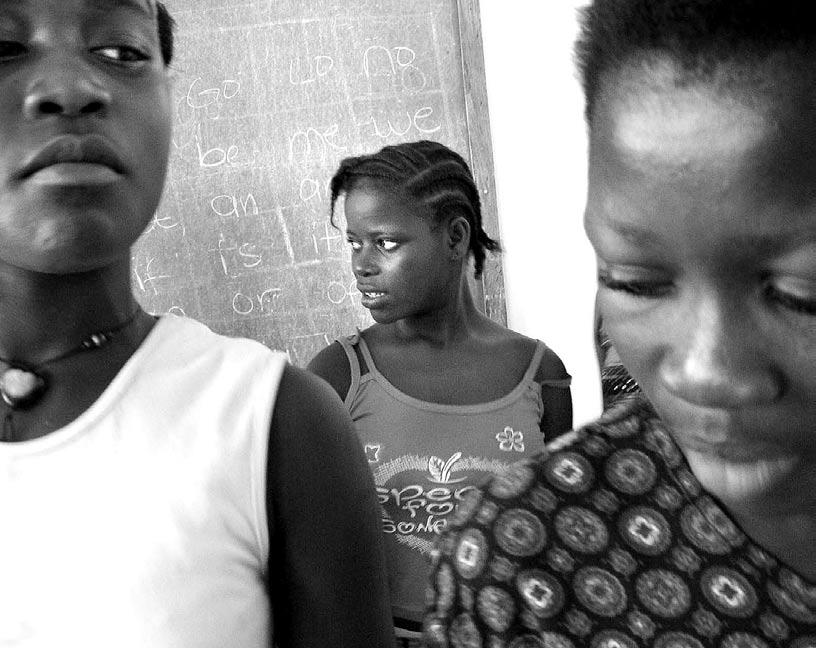
Rachele, the Italian nun who offered her life in exchange for the 139 kidnapped girls. I admired the nun’s courage. I thought that she might serve as a bridge between Europe and Africa for my book.
Question: Would the tragedy have been worse without the Comboni nuns?
Temmerman: Certainly. Without the heroic action of Sister Rachele, things would have been far worse. She was able to rescue 109 of the girls. Sadly, she had to leave 30 behind.
For years, she has campaigned around the world asking for the liberation of these girls. She has visited John Paul II, Kofi Annan, Bill Clinton and Nelson Mandela, as well as the presidents of Sudan, Uganda, Libya and Zimbabwe.
The Aboke kidnapping was the first in northern Uganda to have an international repercussion,
thanks to the efforts of Sister Rachele and the Comboni Missionaries.
Question: Did you decide to create the two nongovernmental organisations you founded when you discovered the reality of these kidnappings as a journalist?
Temmerman: Even before the book was published, I already decided to donate the profits to pay for the school expenses of children who had been kidnapped.
Given that in northern Uganda there was no organisation that would carry out a project of this type, I founded my own organisation, together with my husband and some Belgian friends. For years I have given talks in Belgium to obtain funds for this program of scholarships.
At present, we are paying the fees of more than 1,400 boys and girls, the majority in secondary school and five in university.
In 2003, the Belgian government founded a rehabilitation centre for these children in Lira. It is named after Sister Rachele. In eight months, the centre has rehabilitated 1,300 boys who escaped or were rescued by the Ugandan army.
Question: What does the Lord’s Resistance Army want?
Temmerman: Since 1994, thousands of children have been kidnapped in northern Uganda by the Lord’s Resistance Army [LRA]. It is a guerrilla movement led by Joseph Kony, who calls himself a Christian prophet.
Boys and girls, some only 5 years old, are taken from their homes and schools to neighbouring Sudan. They are given basic military training there and are used as cheap soldiers to fight in Sudan and Uganda.
The LRA uses extreme forms of terror and brutality to obtain the children’s obedience. Between 30-40 per cent of the kidnapped are girls. Already at 12 years of age they are given as “wives” to military men. In reality, they become sexual slaves. Many children are born in the LRA’s camps in southern Sudan. Kony’s idea is that there should be more child-soldiers so that one day they will be able to overthrow the government of Uganda.
We are talking about more than 30,000 kidnapped children since 1994. Many escape; they suffer malnutrition and have many sicknesses. However, the least visible and the most difficult wounds to cure are the psychological traumas, such as fear and anger, against a society that is incapable of protecting them.
Education is the best way to rehabilitate them and help them to recover their self-esteem. To achieve this we created the Abducted Children of Uganda
Pope prays icon will lead to unity
Calling the Blessed Virgin Mary the “mother of unity and of love,” Pope John Paul II prayed that the return of a Marian icon to the Russian Orthodox Church would bring the Catholic and Orthodox churches closer together.
Marking the August 22 feast of the Queenship of Mary, the Pope also expressed again his thanks to God and to the individuals who helped him make his August 14-15 pilgrimage to the Shrine of Our Lady of Lourdes in France.
Speaking to several thousand visitors gathered in the courtyard of his summer villa for the recitation of the Angelus, the pope prayed that “the heavenly mother of the redeemer would be more welcomed, loved and venerated by the Christian people.”
The Pope asked his visitors to turn in prayer with him “to the Virgin Mary venerated under the title of ‘Mother of God of Kazan.’”
Pope John Paul explained that an icon of the Mother of God of Kazan image, which left Russia sometime in the 1920s, “after a prolonged stay in
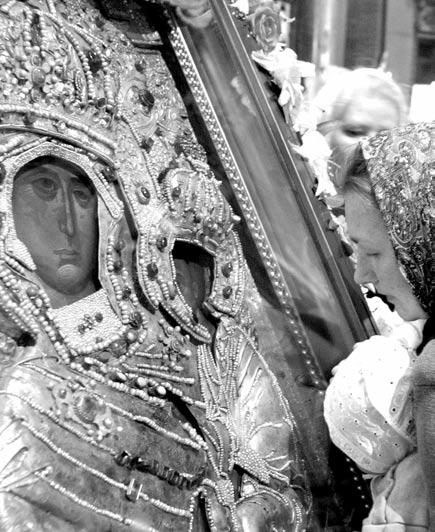
different places, reached the apartment of the Pope some years ago.”
Since 1993, he said, he had kept the Marian icon above his desk, where it has “watched over” his daily work.
The Pope said he was happy to announce that the icon, which is
“very dear to me,” will be taken back to Russia by a Vatican delegation and delivered to Patriarch Alexei II of Moscow, head of the Russian Orthodox Church.
In a statement released by the Vatican, a mixed Vatican-Russian team of experts described the icon as a venerated 18th-century copy of the original 16th-century image. No older copy is known to exist in Russia.
The Pope was scheduled to preside over a special prayer service on August 25, featuring a Byzantine hymn to Mary, at which he was to entrust the icon to Cardinal Walter Kasper, president of the Pontifical Council for Promoting Christian Unity.
Cardinal Kasper was to lead a Vatican delegation to Moscow for an August 28 celebration during which the icon was to be given to the patriarch.
“From this moment,” the Pope said on August 22, “we entrust to Mary, mother of unity and of love, all of our prayers for the good of the church and of the entire human family.” - CNS
association in Belgium. We have already succeeded in having 1,400 kidnapped children return to school.
Question: What is the role of the neighbouring country of Sudan?
Temmerman: Sudan’s support has been basically a response to the alleged support by Uganda of the Sudan People’s Liberation Army [SPLA].
Since 1983 these rebels of southern Sudan have been fighting against the Shariah — Islamic law — and the persecution of Christians by the Muslim government of Sudan. They also try to extract natural resources, such as oil, from the south.
At the same time, Kony and his army of child-soldiers has been used by the government of Sudan itself to fight against the SPLA. Because, as a child-soldier said, “Children are the best fighters: They are obedient, easy to manipulate, courageous, fast and cheap.”
Question: Are you afraid, after having lived all this firsthand?
Temmerman: There were times when I was afraid. When I was in northern Uganda in July 2002, my name appeared on the list of persons that the Lord’s Resistance Army wanted to kill.
I took several precautions at that time. I travelled to northern Uganda with security guards and sometimes I travelled in a “mamba,” an armoured car.
I was very afraid again in October 2003 when the rebels launched attacks 4 kilometres from our Rehabilitation Centre in Lira. The army provided us with 30 soldiers to protect the centre. What we care about is the education of these children, and that the world knows what is happening. - ZENIT
New Nouwen website launched
The Henri Nouwen Society has launched a new Web site at www.henrinouwen.org that offers daily meditations, weekly reflections and discussion guides based on the writings of the prolific priestauthor who died in 1996.
The society, with offices in New York and Toronto, was established in 1998 to extend Father Nouwen’s spiritual and literary legacy and to provide a means for people from a variety of backgrounds to build Christian community.
The Web site also offers an innovative spiritual direction program called Mentors for Spiritual Growth, through which spiritual growth is sup-
ported by e-mail or telephone.
An events calendar lists reading groups and retreats throughout North America, including locations, themes and contact information. Currently Nouwen reading groups are meeting in New York; Minocqua, Wis.; and Chestnut Hill, Mass.
Father Nouwen, who was born in Holland in 1932, wrote more than 40 books on the spiritual life, many of which remain on the Catholic best-seller list eight years after his death. He spent the last 10 years of his life at a L’Arche community home for the developmentally disabled near Toronto.
The Record 26 august 2004 13
news from around the world International News
Catholic
These former child soldiers are getting a second chance. The abduction of girls and boys to act as soldiers has been a brutal feature of civil wars in many African countries.
Photo:CNS
-
CNS
A Russian woman kisses the Virgin of Tikhvin icon at the Kazansky cathedral in St Petersburg, Russia, on July 7. Photo:CNS
TAKING SEX DIFFERENCES SERIOUSLY
By Steven Rhoads RRP: US$20
The recent letter on the role of men and women issued by the Vatican Congregation for the Doctrine of the Faith met with derision from many feminist groups who denounced what they consider to be the Church’s outdated vision of the sexes.
One of the concepts the Vatican letter criticises is the idea that “In order to avoid the domination of one sex or the other, their differences tend to be denied, viewed as mere effects of historical and cultural conditioning” (No. 2). The Church, notes the letter, prefers to propose an “active collaboration between the sexes precisely in the recognition of the difference between man and woman” (No. 4). Support for the proposition that there are substantial differences between men and women is found in a recently published book by Steven Rhoads, Taking Sex Differences Seriously
The notion that it is families and culture that determine masculinity and femininity is commonplace these days, observes Rhoads. This belief has been facilitated by the growing equality of women in fields such as higher education and employment, and by the promotion by feminist groups of the idea that gender roles are socially constructed. The social construction thesis is common to many schools of feminist thought, Rhoads explains.
Feminist thought cannot deny the distinct reproductive functions of men and women, notes Rhoads. Yet, these differences are held to be few and of relatively little importance, while the learned
Reviews

perspectives on popular culture
gender differences are both numerous and powerful. And if the gender roles are learned, say the feminists, they can be “deconstructed,” thus creating a more just society.
D i f f e r e n t f r o m D a y 1
Nevertheless, Rhoads argues that “Men and women still have different natures and, generally speaking, different preferences, talents and interests.” In support of this affirmation he cites research from a number of sources demonstrating that the behavioural and psychological differences between men and women are in fact real, and not due to social conditioning.
Some sex-difference research has identified the hormonal environment of foetuses in mothers’ wombs as a factor explaining differences between male and female behaviour. And neuroscientists have found that men have fewer connections between the left and right hemispheres of the brain, with men’s brains in general being more compartmentalised than women’s.
Male-female divergences are evident from the earliest age, notes Rhoads. Even 1-day-old infants show behavioural differences, with females responding more strongly to the sound of crying. Threeday-old girls maintain eye contact with a silent adult for twice as long as boys. And 4-month-old girls can distinguish photographs of those they know from other people, something boys are generally not capable of doing. Boys, on the other hand, by the age of 5 months are more interested than girls in three-dimensional geometric forms and blinking lights.
Once infants are a year old they can rapidly distinguish between the sexes of their playmates, preferring to associate with those of their own sex. Tests have shown this to be the case even when the newly arrived infants are dressed in the clothes of the opposite sex. Thus, baby girls quickly identify as female another baby, even if it is dressed in masculine clothes.
At 2 years of age, boys are more physically active and much more interested in vehicles, research shows. In nursery
Statistically different too
Rhoads’ book is based on evidence such as:
• Studies from the 1920s to the 1990s showing that in the preschool years, girls are more interested in dance and boys in balls and rough-and-tumble play. These differences begin to appear before the age of 2.
• At puberty, when estrogen levels soar, there is a ‘marked rise’ in the female preference for cooperation over competition and an ‘increasing gender gap’ between boys and girls in their participation in competitive sports.
• Men get a chemical high from winning; women get one from nursing.
• Seven percent of women engaged in casual sex report being extremely satisfied physically and only 11 percent are extremely physically satisfied even when they expect the relationship with partners to be a long one. But 41 percent of married women say they are extremely satisfied with their sex lives.
Women report that marital sex is the best they ever had, and far more regularly than men, they say the sex is better two years after marriage than it was on the honeymoon.
• The most sexually experienced sin-
gle women, while still believing that casual sex is fine, find that their feelings do not cooperate. They come to feel used, hurt and demeaned after sleeping with men uninterested in relationships.
• Rhoads’ national survey finds that even the most progressive male faculty members provide less than half of their families’ baby and toddler care. In fact, less than 3 percent of male faculty say they do more child care than their spouses, whereas 96 percent of female faculty say they do more.
• A 1997 Pew Research Centre survey of women found that 93 percent of mothers regard their children as a source of happiness all or most of the time and 90 percent say the same about their marriage. But only 60 percent of working women find their careers a source of happiness all or most of the time.
• More than twice as many women nearing 40 are unmarried today (28 percent) compared with 1960 (13 percent). As recently as 1980, only 9 percent of women in their early 40s had not had a child; now the number is 16 percent — “a truly staggering rise, given the statistics on women’s happiness and priorities.”

school, boys are interested in new toys, while girls show more curiosity in meeting new children.
“ I n n u r s e r y s c h o o l , b o y s a r e i n t e r e s t e d i n n e w t o y s , w h i l e g i r l s s h o w m o r e c u r i o s i t y i n m e e t i n g n e w c h i l d r e n . ”
Rhoads even notes that parenthood has led some feminist theorists of gender to change their minds when faced with how their young children develop. He recounted the experience of a liberal Berkeley academic who tried to raise her son in a violence- and gun-free environment. Yet, from an early age the son was fascinated with toy guns.
Other feminist academics have been disappointed that their daughters insisted on wearing dresses, in spite of attempts to persuade them to the contrary. In general, attempts to bring up children in a unisex environment, such as the Israeli kibbutzim and some U.S. communes, have also failed.
T h e h o r m o n a l f a c t o r
Male and female differences are present all through school life. Rhoads explains that a large body of research shows that from second through 12th grades boys have more favourable attitudes toward competition, and girls toward cooperation.
This is clearly revealed in the sports favoured at school by boys and girls, with males preferring more competitive games with clear winners and losers, while girls opt for activities with less direct competition. This is true even in pre-puberty children, when girls are just as physically strong as boys.
Behavioural differences are no less notable in adult life, explains Rhoads. Both in the past and in the present, and across all societies, men are more aggressive than women. In the United States, for example, females account for only 10% of homicide arrests. Males also make up the overwhelming majority of those who participate in sports that demand high levels of physical exertion or danger. And men are three times more likely than women to die from accidental injury.
Some feminists, he notes, attempt to explain these differences due to socialisation, insisting that women can be just as aggressive as men. But this argument, maintains Rhoads, ignores the hormonal factor — with higher levels of testosterone in men — and also evidence showing differences in men’s brains. And, at a physical level, tests have demonstrated that when men and women receive the same type of weight training, men’s strength increases far more than for women.
Moreover, if aggression were due to the social environment then with the diminishing differences between the sexes in recent years women should be starting to match men in aggression. Rhoads, citing crime statistics, argues that there has not been any significant closing in the levels of aggression between men and women.
F a m i l y e v i d e n c e
More evidence of differences between the sexes comes from the importance of bringing up children in a family with both a female and male presence, explains Rhoads. The dramatic increase in fatherless families in recent times has led to a multitude of problems.
Daughters, and even more so sons, are at risk when the father figure is absent. Problems range from an increase in criminal behaviour to substance abuse and psychological problems.
For women, marriage and bearing children is also vitally important, Rhoads contends. He cited testimony from some women who achieved success in professional life, but who expressed their bitterness at not having children. By contrast, childlessness did not have the same negative effect on high-achieving men.
Caring for young children, especially if it is combined with an outside job, is a very demanding and tiring task for women. Yet, Rhoads cites a number of studies showing that motherhood and nurturing are a great source of happiness for women. By contrast, men are much less interested in caring for children. Attempts in Sweden, for example, to get men to make use of their legally entitled paternity leave have met with very limited success.
“From the first moment of their creation, man and woman are distinct, and will remain so for all eternity,” notes the Vatican letter (No. 12). This difference, stresses the Congregation for the Doctrine of the Faith, needs to be “placed within Christ’s Paschal mystery.” In this way, “they no longer see their difference as a source of discord to be overcome by denial or eradication, but rather as the possibility for collaboration, to be cultivated with mutual respect for their difference.” - Zenit

The Record 14 26 august2004
Available at Amazon.com
Steven Rhoads has taught public policy at the University of Virginia for over 30 years. His essays have appeared in the New York Times, the Public Interest and other publications. His books include The Economist’s View of the World and Incomparable Worth: Pay Equity Meets the Market. Dr. Rhoads lives with his family outside Charlottesville, Virginia.
Author profile
BRICK re-pointing.Phone Nigel 9242 2952
ELECTRICIAN, Power/light points from $50 each. Rewiring our speciality. 0418 941 286, 9279 5008.
your residential, commercial painting requirements.Phone Tom Perrott 9444 1200.
BUILDING TRADES
PICASSO Painting.Top service.Phone 9345 0557, fax 9345 0505.
CHANGE YOUR LIFE F OREVER
WORK from Home around your children & family commitments.My business is expanding and I need people to open new areas all over Australia.Training given.Highly lucrative. www.cyber-success-4u.org
COUNSELLING
PSYCHOLOGICAL
Counselling and Spiritual Direction.1/2 hour complimentary assessment
Patrick Jones B.Theol., B.Psych.Phone:9316 9111
HOLIDAY ACCOMMODATION
DENMARK beautiful 3brm, 2bth, cott, fully equip, special rates.Ph:0412 083377
ROSARY BEADS
ALL areas.Mike Murphy 0416 226 434.
RELIGIOUS PRODUCTS
Bibles, Books, CD’s, Cards, gifts, Statues, Baptism & Communion Apparel, Albs, Vestments and much more.
RICH HARVEST,39 Hulme Court,Myaree, 9329 9889 after 10.30am.
CUSTOM crafted crystal rosary beads and chaplets all occasions Ph:Joanne 0414 624 580
THE HUMBLE MESSENGER 9225 7199.Shop 16/80 Barrack St (inside Bon Marche arcade), Perth
PRAYER
O most beautiful flower of Mount Carmel, fruitful vine, splendour of Heaven, blessed Mother of the Son of God.Immaculate Virgin assist me in my necessity.O Star of the Sea help me and show me herein you are my mother.O Holy Mary Mother of God, Queen of Heaven and earth I humbly beseech you from the bottom of my heart to succour me in my necessity.There are none that can withstand your power.O show me here you are my mother.O Mary conceived, without sin pray for us who have recourse to thee (3 times).Holy Mary I place this cause in your hands (3 times). Thank you for your mercy toward me and mine.AMEN
panorama a roundup of events in the archdiocese
DIVINE MERCY
Sunday August 29
ETERNAL WORD TELEVISION NETWORK
1 - 2pm on Access 31.IVF programs, stem cells/cloning with Dr John Haas, President of the National Catholic BioEthics Centre USA interviewed by Raymond Arroyo.Sponsored by St Jude Parish, Lynwood/Langford.Our grateful acknowledgement.Other parishes also may wish to sponsor a program.Enq:
The Rosary Christian Tutorial Association, PO Box 1270, Booragoon 6954, 9330-1170.All such sponsorship will be acknowledged on air.
Sunday August 29
GATE OF HEAVEN
Sunday at 7:30pm on 107.9 FM, Radio Fremantle, this week we will feature:(1)
Hail Holy Queen:Mary in the New Testament.(2) GK Chesterton:An Introduction to Gilbert Keith Chesterton.
(3) Defending Life:Jill Stanek with Fr Frank Pavone.Donations toward the program may be sent to Gate of Heaven, PO Box 845, Claremont, WA 6910.
Sunday August 29 OUT LOUD
Youth group will be held at Kulcha in Fremantle from 7-10pm and will involve a drumming workshop by Dunumba. Entry by gold coin donation, tickets $2. Ph:Joanne 9332 5601.Food, drinks, entertainment will be provided.
Monday August 30
NOVENA TO OUR LADY OF VAILANKANNI
Holy Trinity Church, Embleton, 5pm followed by Vigil Mass at 6pm.Last Saturday of every month.Enq:George 9272 1379, Santina 9272 4180.
Tuesday August 31
CATHOLIC FAITH
EXPLORATION (CaFE) FOR YOUTH -
MODULE 2
Youth CaFE Module 2, 7.30pm at the Catholic Pastoral Centre Seminar Room, 40A Mary St, Highgate.Ages:16

to 35.Cost:Free.Enq:Christine 0411 273 572 or Daryl 0402 223 563), or info@youthcafe.org.Website: www.youthcafe.org
Wednesday September 1
CaFE AT ST MARY’S LEEDERVILLE
The CaFE programme, St Mary’s Par ish, 40 Franklin St, Leederville, 9.30am, next six Wednesdays.All welcome.
Friday September 3
COURAGE PRAYER MEETING
5.30pm, 1st Friday of the Month: Support/fellowship for people with same-sex attraction.Goody Hall 39 Jugan St, Glendalough Ph:9242 4066 (8am-4pm)
http://www.geocities.com/brisbanecourage
Friday September 3
ALLIANCE AND TRIUMPH OF THE TWO HEARTS
All night vigil at St.Bernadette’s Church, Jugan Street, Glendalough. Commences 9pm, concludes with Parish Mass at 7.30am followed by Rosary and Benediction.Refreshments available during the night.
Friday September 3
GOLDEN JUBILEE
St Joseph Pignatelli, Attadale, Jubilee Dinner, Tompkins Park Recreation Centre, Alfred Cove.Contact Steve: 9330 4000.
Friday September 3
PRO-LIFE PROCESSION
The First Friday Mass, will commence at 9.30am at St Brigid’s Church, Midland.The Franciscan Friars of the Immaculate will lead us.All are invited. Enq:Helen 9402 0349.
Friday September 3
REIGN OF THE TWO HEARTS
All night vigil and Eucharistic Adoration. All Saints chapel, Allendale Square.
First Friday Devotions to the Sacred Heart of Jesus and First Saturday
Devotions to the Immaculate Heart of Mary commencing at 9pm with Holy Mass, rosaries, hymns and prayers. Concluding with Holy Mass at 7am. Please come and join us in prayer.Enq: 9409 4543
Saturday September 4
WITNESS FOR LIFE PROCESSION
The next First Saturday gaathering will commence with Mass at 8.30am at St Anne’s Church, Hehir St Belmont.We proceed prayerfully to the Rivervale Abortion Centre and conclude with rosary led by Fr Paul Carey.Please join us.Enq:Helen 9401 0349
Saturday September 4
DAY WITH MARY
St Joseph Cabrini Rd, Marangaroo. 9am to 5pm.A video on Fatima will be shown at 9am.A day of prayer and instruction based upon the messages of Fatima.BYO Enq:Franciscan Friars of the Immaculate 9384 3311.
Sunday September 5
GERMAN SPEAKING MASS
Mass in German for the German speaking community will be said at 12noon in St Francis Xavier Church, Windsor St, East Perth, followed by coffee and cake.
Sunday September 5
JUBILEE MASS
St Joseph Pignatelli, Attadale at 9.30am followed by displays and morning tea. Past parishioners and friends are welcome.
Sunday September 5
DIVINE MERCY
Fr Douglas Hoare & The Santa Clara Parish Community welcome everyone to the Santa Clara Church, cnr Coolgardie & Pollock Sts, Bentley at 3pm on the first Sunday of each month for devotion in honour of The Divine Mercy.Commencing with 3 o’clock prayer, Divine Mercy Chaplet, reflection and concludes with Benediction.
Sunday September 5
An afternoon with Jesus and Mary at St Mary’s Cathedral, Victoria Square, Per th at 1.30pm with Holy Rosary and reconciliation.Sermon:Fr Paul Fox on St Laurence Giustiniani followed by Divine Mercy prayers and benediction. Enq:John 9457 7771 or Linda 9275 6608.
Thursday September 9
FEAST OF OUR LADY MARIA SANTISSIMA DEL TINDARI Basilica of St Patrick, Adelaide St, Fremantle.The feast begins with a Triduum, which will be celebrated by Fr Nanni Thursday Sept 9 to Saturday Sept 11 at 7.45pm.Concelebrated Mass, Sunday Sept 12 at 9.45am.The principal celebrant will be Fr Nanni. Procession through Fremantle will commence from the Basilica at 2pm. Enq:Joe Franchina 9335 1185 or mob 0404 801 138.
Friday September 10
WORLD YOUTH DAY TWILIGHT
BALL
Acts 29 Youth with the support of CYM are excited to invite everyone of any age to enjoy a night of fun and celebration with special guest, His Grace, Archbishop Barry James Hickey and young Catholics.Beginning 7:30pm in the Waikiki Hotel function centre.There will be an address from the Archbishop on the awesome celebration that will be WYD Cologne 2005.To order tickets or book a table, please contact Leanne on 0412 088 269 or Rebecca on 0403 825 530.
Saturday September 11 / 12 ST PAUL’S PRIMARY SCHOOL MT
LAWLEY
Invites all past staff, parents and students to celebrate its 75th Anniversary. There will be three Masses on Saturday at 6pm and Sunday at 8am and 10am at St Paul’s Parish Church, Rookwood St Mt Lawley.10am Mass followed by a luncheon at St Paul’s School, Learoyd St, Mt Lawley.RSVP by August 20 to
receive a complimentary ticket to the luncheon.Luncheon by ticket only.Enq: St Paul’s School 9271 8593, fax 9370 3047 or admin@stpaulsmtl.wa.edu.au.
Sunday September 11/12
TRIUMPH OF THE CROSS 2004
Volunteers are required to participate in carrying the cross from Midland to Gingin with 14 stations (or change of teams) along the way.The total distance is 69 km.The pilgrimage will begin at 5pm, Sept 11 at St Brigid’s in Midland and arrive in Gingin about 11am on Sunday.Enq:Sheila 9575 4023, Conrad 9576 0403 or Fr Paul 9571 1839.
Friday September 24
YOUTH SERVICE – TAIZE COMMUNITY
With Br Ghislain 7pm Any musicians and singers are welcome to come for rehearsal at 5pm, St George’s Cathedral, Perth.Enq:, Sister Maree Riddler rsj 93340933/94573371.
Saturday September 25
DAY RETREAT
1pm – 8pm, cost involved, light dinner included, Mary MacKillop Centre, South Per th.Information and registration:Sr Maree 9334 0933/94573371. www.taize.fr
Friday 1-3 October
RETREAT GOD’S FARM
Fr Glynn will celebrate Brother Andrew’s 4th Anniversary amongst all memoirs we have here of Brother’s life.Another retreat is scheduled for Friday 15-17 October.During this retreat Fr Paul will speak on “God is my Father”it will help us find afresh the tenderness and gentle love of God.Both retreats commence 7pm Friday and finish 2pm Sunday at God’s Farm.Contact Betty Peaker on PH/Fx 97556212 or write to POBox 24, Cowaramup, 6284.For the second retreat a bus is available.
Bookings:Cheryl 9346 6000, or 9409 8747.
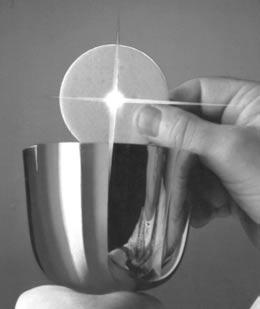
The Record 26 august 2004 15 eye Catcher CLASSIFIEDS Classified ads: $3 per line (plus GST) 24-hour Hotline: 9227 7778 Deadline: 5pm Monday official diary AUGUST 27Visit Confirmation candidates,Our Lady of Mt Carmel - Archbishop Hickey 27 & 29Confirmation,Mirrabooka - Mgr Peter McCrann 28Prison Chaplains' Retreat,Safety BayBishop Sproxton Confirmation,Nollamara - Mgr Tim Corcoran 28 & 29Confirmation,BalcattaFr Brian O'Loughlin VG 2950th Anniversary Mass of Our Lady of the Blessed Sacrament Church,NarembeenArchbishop Hickey Induction of new Cathedral choir members, St Mary's Cathedral - Bishop Sproxton Rosary for Migrant Chaplains and Pastoral Workers,St Mary's CathedralBishop Sproxton Confirmation,ArmadaleMgr Thomas McDonald 29/8 - 3/9Clergy Retreat - Bishop Sproxton 31/8-1/9Central Commission,CanberraArchbishop Hickey SEPTEMBER 1 Confirmation,Cloverdale - Bishop Quinn 2 Staff Development Day,Catholic Education Office - Archbishop Hickey Visit of Ambassador of East TimorArchbishop Hickey 3 Presentation of Youth Books to Year 12s, Aranmore College - Archbishop Hickey Confirmation,Hilton - Archbishop Hickey FURNITURE REMOVAL BUILDING TRADES PERROTT PAINTING Pty Ltd for all
Icon of Kazan Kazan Returns home
■ BY ANDREW RABEL

the Holy Father is returning to Russia its most famous icon. Known as the Icon of Our Lady of Kazan (Kazanskaya), it has been a fixture in the Pope’s private apartments for the last 12 years. In December, the Pope displayed it on a visit to Rome by Russian President Vladimir Putin.
There are a number of versions of the icon of Our Lady of Kazan, and its written history is a mixture of history and legend. But it has had a remarkable reputation for working miracles, particularly the healing of the blind.
In 1579, as the story goes after a fire that nearly destroyed the city of Kazan, after a Tartar invasion, the Mother of God appeared to a little girl by the name of Matrona. Our Lady asked her to dig in the place where the fire took place, and she would find the miraculous icon. She and her mother were met with incredulity; with Mary further saying there would be a chastisement if this were not obeyed. Despite the opposition of church leaders, they started digging and it was found in a fireplace. July 8 is celebrated in the Russian Orthodox calendar as the feast of the apparition of Our Lady of Kazan.
As devotion to the icon increased over the centuries, it was invoked at special times in Russian history, and it is credited with routing the French forces just a few miles short of Moscow in the war of 1812.
The Romanovs showed great respect for the icon, and it was venerated in Moscow and St Petersburg, at one time the residences of the Russian royal family. As well as Kazan, there were cathedrals dedicated to her in those cities, with their own copies of the icon.
John Paul II has often seen it as part of his long cherished goal to heal the 1,000-year schism between East and West. In August 2003, it was widely believed he would visit the city of Kazan, the capital of Tartasan, to return the icon, en route to Mongolia, but
this did not take place. With its return on August 28 (which in the Russian Orthodox calendar is the feast of the Dormition of Our Lady), it will be back in Russia for the 1,000th anniversary of the founding of the city of Kazan in 2005.
For many years, the precious icon, encrusted with thousands of precious jewels, has been abroad. In 1904, it was stolen from the Cathedral of Kazan in St Petersburg, and was smuggled outside the country, just before the revolution.
Eventually it turned up in England at Farleigh Castle, and was recognised as genuine by the Grand Duchess Zenia in 1950. It later on was purchased by a gentleman in the United States and was displayed at the New York World Fair in 196465, along with Michelangelo’s Pieta.
There is some legitimate doubt if this icon is the original one, for example it has been discovered that the rizza, the silver overlay, dates from the 18th century. However, it does appear to be the one that was smuggled out of Russia, so it would be the most important one in existence.

ting into practice Our Lady’s requests to the children of Fatima, particularly the daily rosary and the first Five Saturdays of reparation to the Immaculate Heart of Mary.
Millions of people throughout the world signed a pledge to do this. These were sent to Fatima, and put on microfilm by the Blue Army. John Paul II believed he owed his life to the intercession of Our Lady of Fatima, when he was shot several times in St Peter’s Square by Turkish terrorist Mehmet Ali Agca on May 13, 1981, the anniversary of her first apparition there.
period of religious persecution a papal visit was unthinkable, now there remained other serious obstacles in the face of that goal. The Holy Father was not getting any younger, and his ability to engage in overseas travel was diminishing.
For these reasons, the Holy Father feels that in the absence of a visit by him to Russia, the icon of Kazan should return to its people regardless. A person who may have had a strong influence here is the Grand Duchess Maria Vladimirovna, who lives in Madrid.
While he was recuperating in hospital, he read all the documents pertaining to Fatima, including the controversial Third Secret, in which he saw his own fate, and decided to reveal this to the world in the great jubilee year of 2000. In the post-communist world even secular historians were acknowledging the role this devotion had played in its downfall, with many of them referring to Fatima as the spiritual altar against communism.
“just as the icon is credited with working miracles at different points in Russia’s history, no doubt the Holy Father hopes it will play a part in the penultimate one, the miracle of unity.”
The Holy Father learnt about the icon at the shrine of Fatima, Portugal in 1991, on the occasion of his second visit there. It was preserved inside the Byzantine Chapel of Domus Pacis, the international headquarters of the Blue Army of Our Lady of Fatima. It was acquired a number of years previously, largely through the instrumentality of Blue Army lay leader, Mr John Haffert, who died in 2001. During his pontificate, John Paul II had long cherished the idea of visiting Russia. With the fall of communism in Eastern Europe, and then finally in the Soviet Union itself, a papal visit, which was once unthinkable, now appeared to be more and more of a possibility. For this reason, the Pope wished to return the Kazanskaya personally, thus indicating his desire to obtain this important part of the spiritual legacy of Russia.
The Blue Army obtained the icon of Our Lady of Kazan in 1970, largely as the result of donations from its members all over the world. The purchase was made with the understanding that when the people of Russia would be freed from the yoke of communism, they would return it personally to them.
That the icon was located in Fatima, and obtained by this organisation was quite providential. In her apparitions there, the Blessed Mother had requested prayers for the conversion of Russia, saying it would spread its errors throughout the world if this did not happen. The Blue Army was founded by an American priest, Mgr Harold Colgan in 1947 with the aim of put-
Because the Holy See was increasingly taking an interest with the role the icon could play, particularly in a rapprochement with the Russian Orthodox Church, the Blue Army (which legally owned the icon) was happy to accede this responsibility to the Holy Father. He obtained the Kazanskaya from Fatima in February 1993. One of the interesting go-betweens here was Mr Oscar Luigi Scalforo, the President of Italy, but also one of the prominent members of the Armata Azzura in that country.
However, in the post-Communist Europe, the relationship between the Catholic and Orthodox Churches has been anything but serene. On a number of occasions, scheduled meetings between John Paul II and Patriarch Alexis (the head of the Russian Orthodox Church) have been cancelled. Early last year, the Catholic Church upgraded its administrations in Russia to four dioceses, to widespread condemnation from Orthodoxy, who accused Rome, among other things, of engaging in unwarranted proselytism, and refusing to recognise the country’s spiritual roots.
It thus appeared that while during the
If the Romanov dynasty were restored to the throne of Russia, her son Georgi would be the Czar. Despite her Orthodox faith, she has a great devotion to Our Lady of Fatima.
In the last 12 months, she has had meetings with Bishop Serafim de Sousa Ferreria, the Bishop of Fatima, and Patriarch Alexis, and it is well known that she wishes to use her influence here to improve relations with the Catholic and Orthodox Churches. Sister Lucia, the surviving seer of Fatima, has said in a number of interviews that the conversion of Russia, prophesied by Our Lady at Fatima, does not necessarily mean it will become Catholic, (as had been said by some commentators) but rather that it will no longer persecute the proper practice of religion.
Pope John Paul II had indicated that before the icon returned to Russia, there was to be one final ceremony with it as it concludes its “Roman pilgrimage”. On August 23 Rome-based Zenit news agency reported that at10:30 am on Wednesday 25 August, as The Record was going to press, the Pope was due to preside at the Celebration of the Word for the veneration and return of the icon. Celebrations also included its veneration by the faithful in St Peter's Basilica on Thursday. At 9 am, Archbishop Leonardo Sandri, substitute of the Secretariat of State, was to preside at lauds, while at 5 pm Cardinal Kasper was to preside at a Mass.
Cardinal Kasper was due to return the icon to the Russian Patriarch on Saturday, the day that the Orthodox Church celebrates the Dormition of the Virgin Mary.
Pope John Paul II often says the Church should breathe with both its lungs, and sees the Kazanskaya’s return as a great opportunity for a spiritual renewal in the East. And just as the icon is credited with working miracles at different points in Russia’s history, no doubt the Holy Father hopes it will play a part in the penultimate one, the miracle of unity.
The Record 16 26 august 2004 T he Last Word
Andrew Rabel is a Melbourne-based contributing editor to Inside the Vatican magazine.
This is the revered icon of the Mother of God of Kazan that Pope John Paul II is returning to Russia.
Photo:CNS/The Vatican









































 MBy Carol Glatz
MBy Carol Glatz

















